




Keeping your family on the ranch takes more effort than ever.
Whether you are a serious seedstock producer (regardless of breed type) or a progressive, data-conscious commercial outfit - now is your time to receive the most credible genetic tools in the business, at the best prices, and no drama. Your kids and grandkids need the best tools available. It is time to make the tough decisions.




the@simmgene.com




8 $API and $TI: A Bull Buyer’s Best Friends
Lane Giess answers some common questions about using indices. by Lilly Platts

16 Selecting for Success
Larry Becker focuses on bull selection, data analysis, and collecting performance data to improve his commercial SimAngus cow herd. by Lilly Platts
20 Genomics in Real Life: A Producer’s Perspective
Producer Heath Klein discusses how genomics help him find better animals, faster. by Dr. Jamie T. Courter, Neogen Genomics
28 The Case for Commercial Composite Cattle, Part 1
Understanding composite cattle and their value in the commercial industry. by Rick Bourdon, Colorado State University
32 The Case for Commercial Composite Cattle, Part 2
Evaluating three different composite breeding systems. by Rick Bourdon, Colorado State University
42 Breeding Composite Seedstock, Part 1

The fundamentals of breeding foundational composite seedstock. by Rick Bourdon, Colorado State University
50 Breeding Composite Seedstock, Part 2
Once your foundational composite animals are in place, how do you maintain hybrid vigor? by Rick Bourdon, Colorado State University

STANLEY MARTINS FARMS
141 Hwy 18 • Postville, IA 52162 563-419-2444 (c) • 563-864-7305 (h) www.stanleymartinsfarms.com
Linking SimGenetics to Commercial Cattle
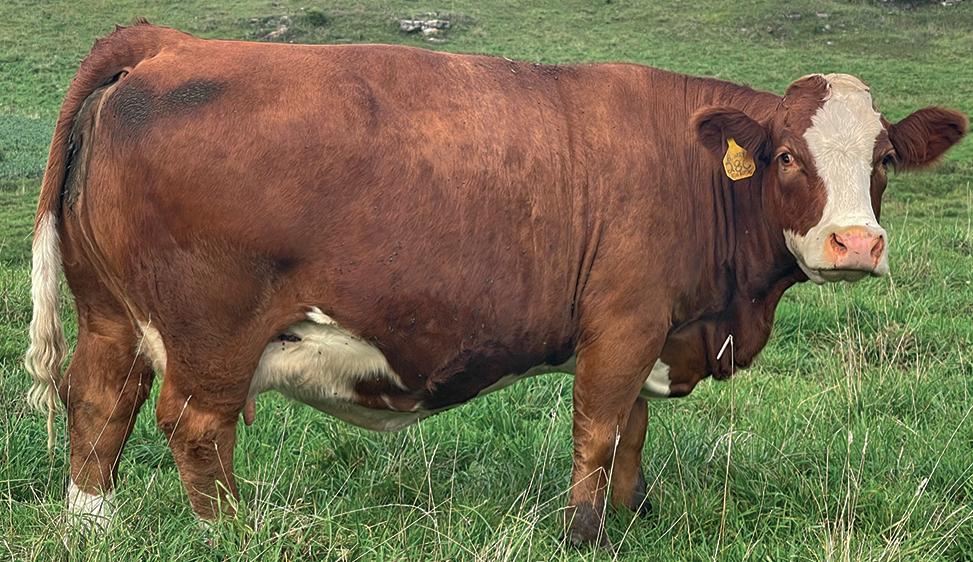
Published ByASA Publication, Inc.
One Genetics Way Bozeman, Montana 59718 USA 406-587-2778 Fax: 406-587-9301 register@simmgene.com
Ceo Wade Shafer, PhD
Business Manager Chip Kemp
Managing editor
Platts
orial Consultant

Dan Rieder
art director
Cynthia Conner
Design/Production
Joel Coleman
Gretchen Jensen
Jenna Wacker
Media/ Website Administrator
Kathy Shafer
General Manager
Jim Largess sales Manager Nancy Chesterfield advertising & editorial assistant

Rebecca Price accounts receivable
• We sell bulls every month of the year.
• 90% of our bulls sell from $3,000-5,000.
• We export.
Board of TrusTees executive Committee:
Doug Parke, Chairman Chris Ivie, Vice Chairman
Chad Cook, Treasurer Tim Clark Ryan Thorson
Wade Shafer, PhD, Executive Vice President
Randy Moody, Immediate Past Chairman
North Central Region: Tim Clark (2024) 1999 18th St NW Turtle Lake, ND 58575 / 701.799.7752 Tim.Clark@hubbardfeeds.com
Loren Trauernicht (2025) 901 E Pine Rd Wymore, NE 68466 / 402.230.0812 mtrauernicht@diodecom.net
Matt Aggen (2026) 27133 146th St Harmony, MN 55939 / 701.866.3544 mattaggen@hotmail.com
Troy Marple (2026) 9450 Michaels Rd Westmoreland, KS 66549 / 785.250.0522 troy.j.marple@gmail.com
Western Region: Chad Cook (2024) PO Box 174 Walsh, CO 81090 / 719.529.0564 bridlebitsimm@gmail.com
Maureen Mai (2025) 427 Peaceful Way Bonners Ferry, ID 83805 / 208.660.2726 rymocattle@gmail.com
Ryan Thorson (2025) 1725 Road 261 Glendive, MT 59330 / 406.694.3722 ryanthorson7@gmail.com
Quin LaFollette (2026) 1476 Hwy 14A Powell, WY 82435 / 307.899.3553 Quin@Blacksummitcattle.com
Chairman Chris Ivie
Vice-Chairman
Tim Clark
asa Publication, Inc., Board executivesecretary-Treasurer
Doug Parke
Chad Cook
Ryan Thorson
Wade Shafer, PhD
American Simmental Association
Megan Jimerson One Genetics Way, Bozeman, Montana 59718 USA
406-587-4531 FAX: 406-587-9301
Eastern Region: Chris Ivie (2024) PO Box 264 Summertown, TN 38483 / 931.215.0316 iviejc@usit.net
Doug Parke (2024) 153 Bourbon Hills Dr Paris, KY 40361 / 859.421.6100 office@dpsalesllc.com
Barry Wesner (2024) 1821 W 700 S Chalmers IN 47929 / 219.863.4744 wesnerlivestock@yahoo.com
Brandi Karisch (2026) 648 Polly Bell Rd Starkville, MS 39759 / 225.717.3324 mbkcattle@gmail.com
Scott Trennepohl (2026) 6591 W 625 N Middletown, IN 47356 / 765.620.1700 sttrennepohl@yahoo.com
South Central Region: Brandon Callis (2024) 26123 State Hwy 152 Minco, OK 73059 / 979.204.1265 callissteer@yahoo.com
Victor Guerra (2024) PO Box 92 Linn, TX 78563 / 956.607.5515 vgg03@aol.com
Joseph Hensgens (2025) 136 Deer Park Ln Rayne, LA 70578 / 985.992.9119 joehensgens@yahoo.com
Greg Burden (2026) 890 VZ CR 2205 Canton, TX 75103 / 405.780.0372 greg.gbcattle@gmail.com
The bulls that we have available are produced from cows like this, and will add more muscle and growth to your calf crop.
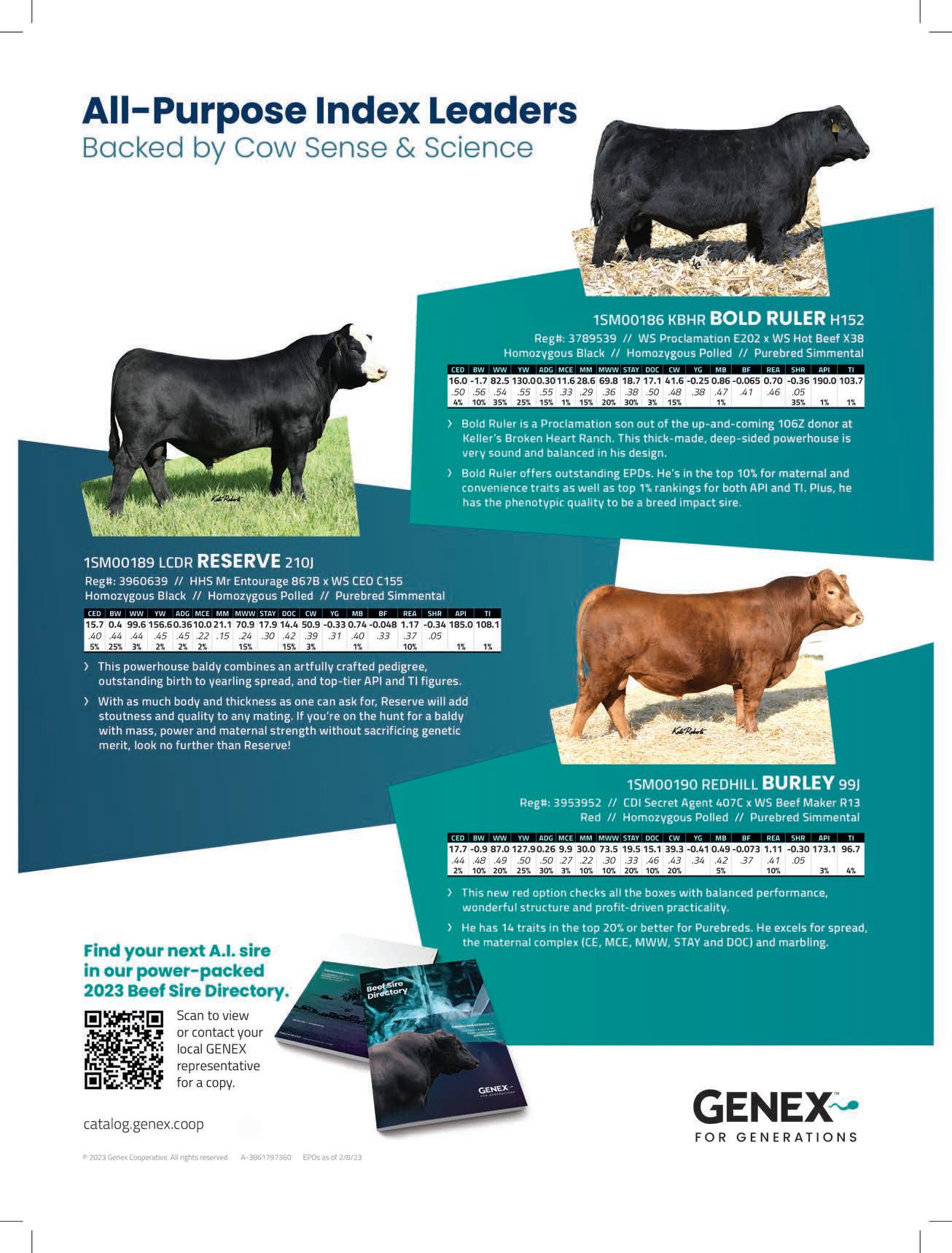

As I write this column I am sitting at ASA’s Annual Meeting, listening in on current conversations, things that are upcoming, and catching up with coworkers I haven’t seen since last fall. Each time I participate in a gathering of ASA’s people I am reminded of how committed everyone is to improvement, growth, and simply doing the best we all can.
My husband, Sam, and I have had the privilege of getting to know Mr. Red Steagall, a legend in the western music industry. The first time we watched Red perform we were captivated by his ability to tell a story, and took away a number of notable lessons. We have watched Red many times since, and one of the things he always talks about is a statement the John Deere company made in 1856: “I will never put my name on something that’s not as good as the best in me.”
Just as that statement stuck with Red it’s stuck with us, too, and I try to keep it in the back of my mind while doing this work and living my life in general. I will admit that I sometimes get a little overwhelmed by
the number of things my name does get put on and I end many days wishing I had more time to commit to everything; I have joked with Sam many times about how it might feel nice to take the pressure off ourselves and get jobs that don’t require so much ownership. We are of course kidding, and I am grateful that I do get to put my name on work that I really am proud of.
That statement also applies to so many people in this industry, and this month’s breeder feature is an excellent example. I first spoke to Larry Becker for the index selection article in this issue, and after a few minutes knew I needed to pivot and do a full feature on his operation. Larry is incredibly passionate about improving his cow herd and sees his work as a contribution to the future of the industry. He is clearly very proud of his cow herd, and his knowledge is impressive.
This issue of SimTalk also features a discussion about utilizing indices in bull selection, an extensive series about composite cattle, and a feature on Heath Klein’s family operation by Neogen’s Jamie Courter.
I hope everyone is having a great spring, and that summer brings lots of grass and great weather!


 by Lilly Platts
by Lilly Platts
An index is not an EPD, but rather a measure of the difference in profitability for the designed scenario. Understanding each index can help you move the profitability of your cow herd in a positive direction. Lane Giess, ASA Geneticist, answers some common questions about index selection.
Bull selection impacts a cow herd for many years, often long after the bull has left an operation. You might spend months leading up to sale season combing through catalogs, studying numbers, making phone calls, and putting in the time to make sure your selection will live up to your operation’s needs. Or, you may have a simple approach and assess bulls the day-of with your eye on a few select criteria. Either way, the bull you want is going to walk through the sale ring or across your screen, and you will have a small window of time to balance the cost of the bull and the criteria he meets (or doesn’t). Even if you have a longstanding relationship with a seedstock breeder or a buyer who picks out bulls for you, simplifying the process is beneficial.
Indices take into account many EPD and combine them into one value, expressed in dollars of profitability prediction among bulls. ASA publishes two indices:
All-Purpose Index ($API): Dollars per cow exposed under an all-purpose-sire scenario.



Terminal Index ($TI): Evaluates sires for use on mature Angus cows with all offspring put on feed and sold grade and yield.

Interpreting $API and $TI: Just as with EPD, zero in on the unit difference between bulls. (As described above, index units are in dollars per cow exposed.) The difference can be used to determine how much a bull is worth compared to another. Put another way, how much you can pay for one bull compared to another. For example, when buying an all-purpose-type sire, you can quickly figure a bull scoring +100 for $API is worth an extra $6,000 over a +50 bull if both are exposed to 30 cows over 4 years ($50 diff. x 30 hd. x 4 yr.= $6,000). Percentile is required to determine where a bull’s index value ranks him relative to other bulls in the breed.
$API (All Purpose Index), and $TI (Terminal Index). $API estimates profitability when a percentage of daughters remain in the herd as replacements. $TI estimates terminal profitability.
(Continued on page 10)

Giess: An economic index such as $API or $TI greatly improves a breeder’s ability to select for genetics associated with commercial profitability. Without the use of an index that accounts for all traits, selecting for balanced genetic improvement is too burdensome. Commercial cattlemen can use a single value to simplify their selection criteria and use $API or $TI as a starting point in their decision-making process.
Giess: Seedstock breeders have the responsibility of improving the genetics that influence the entire commercial beef industry. Because of this, the goal of commercially minded breeders should be to develop genetics that are commercially viable and profitable. An economic index helps with this goal.
Instead of breeders selecting animals based on individual traits related to a single aspect of an operation’s profitability (i.e., Weaning Weight, Calving Ease, etc.), an economic index combines all economically relevant traits and weights their importance in a single value — one expressed in dollars.
If your goal as a breeder is to develop genetics with the intention of retaining females and being more maternally focused, then the All Purpose Index ($API) is the one you should use. This index focuses on the whole-life-cycle and accounts for traits such as maternal calving ease, docility, fertility, and, perhaps most importantly, female longevity. As a whole-life-cycle index, the $API still needs to account for carcass performance since many of the daughters will contribute to the terminal genetics of their progeny.

On the flip side, if your goal as a breeder is to develop genetics with the sole purpose of maximizing terminal profitability, then the Terminal Index ($TI) is what you should use. The $TI was designed for breeding systems with the assumption that all females were purchased or developed separately. A terminal mating system places greater emphasis on carcass performance, growth, and direct calving ease.
It’s important to note that all seedstock breeding programs are different and have commercial customers with varying goals, so the best suggestion would be to use the $API and $TI as a starting point and then focus on other traits to develop a breeding program.
Dr. Ken Odde runs commercial cattle in South Dakota and is the past department head for the Animal Sciences and Industry Department at Kansas State University. He shares his insight on utilizing $API and $TI:
“The purpose of a selection index is to help the commercial producer, or the potential buyer, in appropriately balancing traits. We now have EPD on such a wide variety of traits that it is difficult to decide what is actually the most important. Indices are really a breed association effort to help producers with appropriately balancing traits.”
Since each producer’s operation is unique, how can we trust that an index will do what it’s supposed to?
Giess: Indices are designed to be robust in their function. And while every operation is unique, the beef industry’s profit centers are fairly constant across all regions. The commercial industry needs females that stay in the herd until profitable, don’t exceed reasonable nutrition requirements, produce and wean a heavy calf that is born healthy, grows well, and kills with excellent terminal merit. This is obviously a simplification of the nuances of the beef industry, but over all this is what an $API index is designed to accomplish. And while breeders can tailor their breeding programs to fill niches, an index will guide a breeding program in the direction of commercial profitability.

Do the inputs for $API and $TI change over time, or does the formula stay the same?
Giess: The economic inputs for $API and $TI largely stay the same across years. They are designed to be robust in market fluctuations and not inappropriately discount an animal’s genetic worth if corn prices rose suddenly and then dropped back to normal a few months later. Since breeding decisions happen at a fixed point in time, you want an index that can withstand those market fluctuations.
How long can it take for a producer to see a measurable change after committing to using indices in selection decisions?

Giess: Unlike single trait selection, realizing the genetic progress from economic-index-based selection will inevitably be slower. Since $API uses a balanced approach to weighting every economically relevant trait, you will not be using the extreme outliers for a single trait. For traits with low heritability, this noticeable difference will be even slower. This process can take years with long generation intervals, and the need to keep females around until profitable.
Do you have any tips for producers wanting to utilize $API or $TI?
Giess: One thing that is important to note about indices is the reliability of the prediction. We do not calculate an “accuracy” for indices since they are aggregated from many EPD, each with their own accuracy. If comparing a highly proven sire’s index to that of a yearling bull, the reliability of the younger bull’s index is inevitably lower. Also, it’s extremely important to remember that an index allows superiority in one trait to outweigh poor genetic merit in a range of other traits. This means that if a sire is exceptional for only one of the key traits in an index and poor for the others, he may appear more favorable than bulls with average performance across all traits.
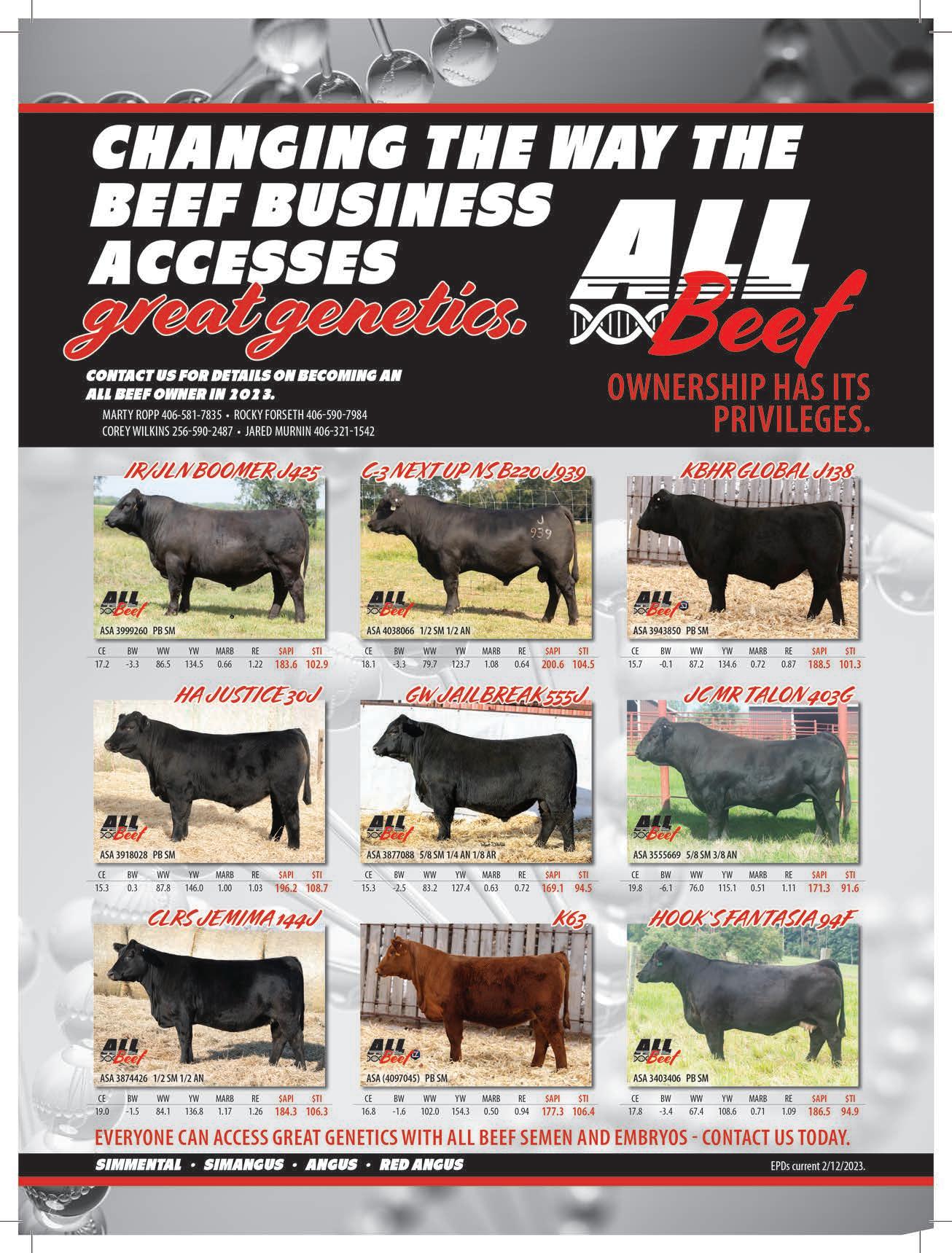






Larry Becker’s passion for using data to improve his cow herd is immediately evident in conversation. The Kansas cattleman studies the numbers, learns whenever he can, and utilizes every piece of information available when making selection decisions. Becker first purchased SimAngus bulls for his cow herd in the early 2000s, and has since committed to the cross, focusing on improving traits, profitability, and the quality of his commercial cow herd.
Becker grew up in Kansas on his family’s diversified cow-calf, row crop, and farrow-to-finish hog operation. His father also purchased feeder steers in the winter to run on grass and finish. In 1988, Becker started selling Pioneer Seed along with farming with his brother, Jim. His brothers, Bill and Kenny, continued to farm and run cows, and in the early 90s, Becker also became more involved in raising cattle. He purchased 30 Angus heifers, breeding them to a Gelbvieh bull. He soon started breeding his Gelbvieh, Angus-cross cows to SimAngus bulls. Since then, Becker has committed to SimAngus in his commercial cow herd.
The seed business continued to grow, and in 2015, Becker partnered with his niece’s husband, allowing him to dedicate more time to raising beef. Today, he runs around 150 head of SimAngus cows in northeast Kansas. The majority of ground in the area is farmland, which means cattle pastures are typically small, but crop residue is readily available for grazing.

Feeding out a group of his calves pushed Becker to really focus on improvement. “I went to finish some cattle at our local feedlot, and was really pleased with the way they grew, but the carcass quality wasn’t quite as high,” Becker shares. “Since then, I’ve been working on carcass quality and trying to figure out what makes the best end product.”
He has targeted bull selection to guide this process. Becker shares, “Selecting a bull for your operation is not a simple task if you want to improve your herd. First
you need to think of the weaknesses that you want to improve, and look at each bull’s EPD numbers in the sale book. Most producers look at weaning weight and birth weight, which is important to a cow-calf producer, but one should look at the whole picture. Every EPD has a value in your operation and should be looked at and always try to improve what you have.”
In 2012, Becker purchased his first bull from Irvine Ranch, and has stuck with the Kansas seedstock program ever since. “I finished out 41 steers sired by five different bulls, and my bull from Irvine Ranch sired the best of the group by far, with all seven steers grading choice or better and two going prime,” Becker shares.
In 2022, all of Becker’s steer calves graded Choice or better, with 25% grading Prime. Becker’s relationship with Irvine Ranch has been mutually beneficial: Becker has a consistent, trustworthy source for bulls that fit his criteria, and the data he has collected and reported over the years also makes its way back to the Irvine program.
Becker explained, “John [Irvine] has actually turned me away from some bulls that I thought would be really good because he felt like it was more of a terminal bull than maybe the numbers were showing, for example. I have just had good luck with the bulls I have bought from them. I value that they are specialists; they know more than we know. It’s no different than going to an accountant and letting them do your taxes.”
Becker believes that a positive relationship between seedstock and commercial producers is important. “If you trust them and believe in their program, they’re probably going to help your operation out,” he says.
In line with his dedication to collecting data, Becker recently submitted DNA on his entire cow herd to ASA through the Cow Herd DNA Roundup program (CHR). John Irvine introduced Becker to the program, and after researching it he decided to add DNA to his toolbox. “I’m just at the beginning stages with the CHR. It will give me EPD numbers on all my cows as a commercial
producer. One of the EPD that I think will help me more than anything with this program is Stayability. This is information that you don’t know until it’s too late. It should help the longevity and profitability of my herd. We can save back replacements based on EPD numbers plus the performance of the heifer,” Becker explains.
Becker has also sold spring-born calves to the Irvine family to be entered in the Steer Profitability Competition (SPC). The Irvine family calves in the fall, and through Becker, were able to source calves sired by their bulls that also met the spring-born requirement for SPC. This program has also given Becker valuable carcass information. Becker shares, “The facility at the University of Missouri had extra room for steers, so in November of 2020 I sent 18 head there. They also use RFID tags to track daily consumption for feed efficiency.”
He has since analyzed this additional data, and continues to obtain feed efficiency information whenever possible. “In 2022, one of the steers that finished had $203 more cost of gain than the top steer, and had the same average daily gain of 3.95. The last bull I purchased from Irvine Ranch was in the top 20% of the group for cost of gain,” Becker shares.

Heterosis is vital to Becker’s program, and SimAngus simply checks all of the boxes he cares about. “Simmental cattle made beneficial improvements to frame size, birth weight, and marbling. The best of any continental breed. Simmental also has great maternal characteristics, longevity, and yield grade. It’s a good complement to Angus,” he explains.
“To get heterosis, you try to pick two breeds that cross well, and Simmental and Angus are the two best candidates. I can also get EPD numbers, and it’s simple to compare them,” Becker adds. “Crossbreeding means more weaning weight per calf over the life of the cow.”
He compares these principles to his experience selling seed. “We don’t sell single crosses or inbreds, we sell hybrids. A hybrid will usually yield twice what an inbred will.”
Becker is naturally drawn to numbers, and understands that data can be difficult and time consuming to sort through. He suggests that commercial producers start with their bull supplier if they are interested in getting more granular in their selection decisions. “Trust your bull supplier. Find someone you trust and use them as a resource. If you are looking at a catalog and feel overwhelmed looking at numbers, figure out what you think your weakness is. If you are having trouble with pulling calves, then you probably want to look for a negative birthweight number and calving ease. If you’re looking for a heifer bull then you need to look at $API for sure. I’m always looking at the top ten to 15% on most of the EPD numbers,” he shares.
Becker believes that data, DNA, and numbers will be increasingly important to the industry, and that obtaining and sharing this information will become standard. “Eventually it is going to matter for commercial producers. Cattle buyers will know what kind of genetics you have, and you may be collecting tissue samples on cattle as a way to get a premium,” he says.
Becoming involved with a breed association isn’t typical among commercial producers, but for Becker, using the tools made available through programs like CHR, and technology like DNA, simply makes sense. “They [ASA] are number one in helping the average producer with improving their cattle operation,” Becker shares.
Becker also cares about sharing the knowledge he has gained over his years studying genetics. “I want to do what I enjoy, and help other people out along the way.”

$API: 130 $TI 81
W/C Hoc HCC Red Answer 33B x
WS Prime Beef Z8
ASA# 3784793 • Red • Homo Polled
Exciting, complete, homo polled, rare Red Answer son!
Pays to Dream x Trademark
$API: 112 TI: 80
ASA# 2988788 • Homo Black • Hetero Polled
Two-time NWSS Grand Champion Bull.
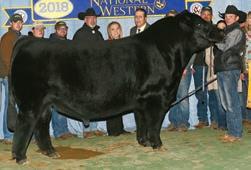
EGL Firesteel 103F x WHF Summer 365C
ASA# 4068398 • Homo Black • Homo Polled
3/4 Simmental. NEW and exciting calving ease and outcross pedigree with outstanding phenotype out of fantastic donor Summer 365C!
LCDR
$API: 177 $TI: 105
EGL Firesteel 103F x WS Miss Sugar C4

ASA# 3812282 • Homo Black • Homo Polled
Use him to make those next generation
Purebreds. Excellent foot shape and depth of heel.
Wood
$API: 99 $TI: 66

Loaded Up x JS Black Satin 9B “Boots” donor
ASA# 3565419 • Black • Homo Polled
Doc Holliday is a great new baldy who was Champion Bull in Denver! Ultra sound and stout by the Boots donor!
$API: 114 $TI: 70

Damar Next D852 x WHF Angels Envy 245A
ASA# 3924191 • Red • Polled
Exciting, stout, half Red Angus x Simmental out of a tremendous cow family!

Pays to Believe x Shear Pleasure
ASA# 3327014 • Homo Black • Homo Polled Great-built, stout, double-homozygous Pays to Believe son!












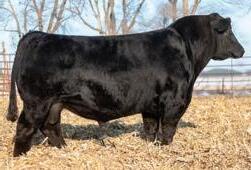








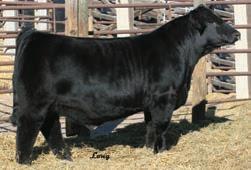


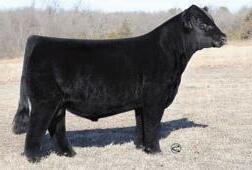


$API: 172 $TI: 105





















CCR Cowboy Cut 5048Z x WS Miss Sugar C4
ASA# 3254156 • Homo Black • Homo Polled Proclamation is one of the ELITE, must-use superstars!

Mr CCF Clarified E3
$API: 120 $TI: 74
Mr CCF 20-20 x Miss CCF Sheza Superstar by Duracell
ASA# 3275273 • Homo Black • Homo Polled
Backed by the Louisville and Denver Champion Sheza Bonnie, Clarified offers elite phenotype, proven genetics, and a balanced EPD profile.
CCR Anchor x Uprising x Quantum Leap’s Dam
ASA# 3492381 • Hetero Black • Homo Polled 3/4 Lead-off Bull in the 2019 NWSS Percentage Champion for Lee.
$API: 116 $TI: 90

Rubys Turnpike 771E x BRKC Daphne DY37
ASA# 3632499 • Homo Black • Homo Polled
Dakota Outlaw’s first calves are “the talk” of the country when it comes to fresh genes to use in 2022!
$API: 128
$TI: 77
W/C Executive Order x LazyH/Adkins Blkstr Z15
ASA# 3150188 • Homo Black • Homo Polled Deplorabull is the $100,000 valued herdsire prospect that was the talk of Kansas City and Louisville in the fall of 2016. He was named Bull Calf Champion at both the American Royal and the NAILE.

W/C Executive Order 8543B x Rubys Rhythm Z231
ASA# 3493800 • Hetero Black • Homo Polled
Perseverance is a new, exciting baldy Executive Order son with tremendous maternal genetics behind him. The first dozen calves out of him have been born light and easily out of first calf heifers.
$API: 110 $TI: 73 $API: 104 $TI: 72
W/C Double Down x WHF Summer 365C
ASA# 3658592
Double Up is by proven calving ease sensation Double Down out of the legendary WHF/Steenhoek multiple time champion WHF Summer 365C.
$API: 109
$TI: 67
Relentless x High Regard x Aubreys BlackBlaze II
ASA# 3878993 • Homo Black • Homo Polled
Exciting outline and build with phenomenal cow families on both sides!
$API: 102
$TI: 69

Loaded Up x RAJE/PB Montecito 63W
ASA# 3289219 • Hetero Black • Homo Polled County O goes back to the Rhythm donor at Ruby’s! He’s a featured herdsire at Griswold Cattle Co, OK and is making the right kind!
JBSF Berwick 41F
Rocking P Legendary C918 x JBSF 402B
ASA# 3462584 • Black • Polled
Newly available and producing extremely valuable progeny across the nation!
API: 128 $TI: 77
W/C Executive Order x Built Right
ASA# 3500551 • Red • Polled Hot, red, calving ease bull. 2019 Iowa State Fair Division Champion!
$API: 116
$TI: 75
W/C Double Down 5014E
W/C Executive Order x Yardley Utah
ASA# 3336150 • Homo Black • Homo Polled
Double Down has now proven himself with scores of very nice calves, and as expected, has stretched the necks, yet provides the rib the industry is demanding in the show room and the pastures.

$API: 175
$TI: 99
TSN Architect J618
G A R Home Town x TSN Miss Cowboy D350
ASA# 3928828 • Homo Black • Homo Polled
The most exciting calving ease SimAngusTM in the land with top % ranks in every trait!




$API: 110 $TI: 74
LLSF Pays to Believe x SVF/NJC Built Right N48
ASA# 3416614 • Homo Black • Homo Polled

The most talked-about new blaze bull across the nation!
$API: 208 $TI: 117



Hook`s Beacon 56B x CLRS Always Xcellent
ASA# 3563436 • Homo Black • Homo Polled Guardian was the $85,000 selection in the 2020 “Bred For Balance” Sale. He’s the breed’s #1 $API Purebred and #2 Marbling Purebred!





LLSF Vantage Point F398 x Miss Sugar C4
ASA# 3858588 • Homo Black • Homo Polled Exciting, new sire that's ultra-complete out of one of the hottest donors!
All Aboard x Erixon Bitten
$API: 136
101
ASA# 3803257 • Red • Homo Polled One of the hottest red bulls to sell in 2021!
CDI innovator x WS Miss Sugar C4
ASA# 3808126 • Homo Black • Homo Polled
Maternal brother to WS Proclamation and LCDR Impact and Favor. 9002H is the CE leader Innovator son and higher $API.
$API: 138 $TI: 79



WLE Copacetic E02 x Rubys Wide Open 909W

ASA# 3775641 • Homo Black • Homo Polled Private Stock was the 2022 Fort Worth Champion Bull and the 2021 NAILE Champion Bull.
JSUL Something About Mary 8421 x R Built To Believe 801F
$API: 130 $TI: 77
$API: 100 $TI: 69
One Eyed Jack x Upgrade
573-641-5270 www.cattlevisions.com
$API: 125 $TI: 80
W/C Bet On Red 481H
W/C Fort Knox x W/C Relentless
ASA# 3972780 • Hetero Black • Hetero Polled Cool profiled SAM son with a cool face backed by a great cow family!
PW/C Bankroll 811D x Hooks/ KS Sequoia
ASA# 3808104 • Hetero Black • Homo Polled Griswold selected him at the $202,000 high seller at Werning’s 2021 sale!
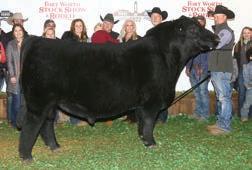


Drake Poker Face x Erixon Bitten
$API: 122
79
ASA# 3803217 • Homo Black • Homo Polled Big-bodied, performance-driven baldy!





Profit x FCF Phyllis 532
ASA# 3926810 • Hetero Black • Homo Polled Hot Topic was the 2021 NAILE Grand Champion % Bull! His dam is one of the hottest Angus donors in the world!
ASA# 3134708 • Homo Black • Homo Polled Producing extremely sound, deep-sided, highquality progeny! His first crop of heifer calves has produced champions at the highest levels!
$API: 139 $TI: 85



Rubys Turnpike 771E x Hooks Shear Force 38K
ASA# 3644933 • Homo Black • Homo Polled Complete Turnpike son at Western Cattle Source, NE!








ASA# 3808091 • Red • Homo Polled Griswold’s red bull purchase from the 2021 Werning sale!
SWSN Cash Flow 81E

Profit x MR CCF Vision
ASA# 3348420 • Black •Polled Cash Flow sired some of Hartman’s and Vogler’s high selling lots this past year!




$API: 181

91

IR Imperial x CDI Verdict
ASA# 3766616 • Homo Polled High-selling bull at BAR CKs 2021 Sale! Top 1%



LLSF Draft Pick H383
LLSF Better Believe It D64 x Kenco Steel Magnolia
ASA# 3804789 • Homo Black • Homo Polled Reserve National Purebred Bull Calf Champion and leadoff in Lee’s Champion Pen! Add power!
$API: 135 $TI: 78
W/C Fort Knox 69H Hardwire
W/C Fort Knox 609F x W/C Relentless 32C
ASA#: 3808092 • Red • Homo Polled Sloup’s purchase at WC 2021 sale!







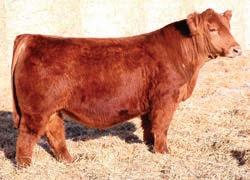








S&S TSSC Limitless 041H (1/2)

Conley No Limit x WS Revival
72
ASA# 3776857 • Black • Polled Calf champion at 2020 NAILE and 2021 Royal!
tool, but not a silver bullet. As more data and information are put into the IGS database by breeders and commercial producers, coupled with genomics, the predictions learn and become more accurate, which can cause EPD to change.
Previous articles have discussed the benefits of genomically enhanced expected progeny differences (GE-EPD) from a scientific perspective. Here, Heath Klein discusses the benefits from a producer’s perspective including how he utilizes genomic technology on his operation and the impacts he has seen within his cow herd.
As part of a fifth-generation farming and commercial cattle operation, Heath and his wife, Ami, are firstgeneration SimAngus seedstock producers located in Atwood, Kansas. Klein Ranch offers 30 bulls and 50 commercial SimAngus females at auction every year on the first Wednesday in March.

The biggest thing I love about genomics is that anybody can do it, and it really levels the playing field between smaller and larger operations.
Klein: We do our best to mention that all the bulls have been genomically tested, or all EPD are genomically enhanced, in all advertisements, email blasts, sale catalogs, and in our producer meetings, print material, and when I talk to my customers. It’s a marketing tool for us.
Klein: We started genomic testing back in 2007 when coat color and horned/polled were first offered to members. Therefore, when full genomic profiles like the GGP-LD became available, we were already accustomed to the technology.
The turning point in my thought process was to understand that genomics and EPD are a breathing, living organism that is always changing. It is a great

Klein: It’s very important. I am not going to go buy a registered animal unless their EPD are genomically enhanced. Period. I don’t waste my time, money, or effort. That’s how much I believe in the technology.
As far as our own cattle, we view genomics as an investment. As a smaller producer, it is the best and most economical way to show the value in my cattle, especially the females. With genomics you know more about a yearling heifer’s genetics prior to breeding and can make a more accurate decision about her future.
Is it best to keep her, move her to a different breeding group, or market her beneficially to help someone else? Marketing a female whose EPD have changed after genomic information does not mean that she has no value, but that she better aligns with someone else’s breeding objectives.
Klein: We use the enhancements multiple ways after initial selection. After we profile that heifer, we can determine whether she is best suited for our projected donor, recipient, or terminal section herd. We have already made our phenotypic selection decisions. Therefore, all selected heifers have a place. Genomics just give you the knowledge of where she will be best suited, and you don’t spend four to six calf crops to figure out she was placed in the wrong herd.
Klein: There are two main reasons we believe in and use genomics. The first is the leverage of data and information that I as a breeder receive from submitting a DNA sample. This makes me more confident and accurate in my breeding. The second point is for my customers. Genomically enhanced EPD allow us as breeders to give customers confidence and reassurance of what we are selling, almost like insurance. Not only does genomics help with eliminating sire and dam pedigree mix-up, but it reduces the uncertainty of the EPD they base their purchase on. I want my customers to feel confident in what we are selling. If you as a customer have questions about genomics, ask your bull provider whoever it may be. We would love to discuss genomics and their benefits with you because of the investment we have made.
(Continued on page 24)
Klein: Yes. With genomics, I am able to find better animals, faster, and the EPD back up what they’re doing physically. This year, I have ten animals I raised that are over 180 on $API and over 90 on $TI. Prior to this year I only had three animals total over 180 $API. The bulls I cut this year were probably the top one-third of my bull pen four years ago. It is amazing how fast things can change for you.
I have also found having multiple generations of females genotyped increases confidence. The more layers of genomics you have on an animal, it’s almost like a snowball effect. I have cow families now that I am three to four generations with genotypes on file, so when I send genomics in on progeny I have a good idea what to expect when my results are delivered.

Klein: I would say yes. Even though the genomics help, we try to collect as much data as possible. We ultrasound all bulls, collect docility scores, and take weights on everything. I still believe the genomics is only as good as the data behind it.



(Continued from page 21)
Klein: I’m having more successes now than prior to genomics. Overall, our calf crop performs better. We have less culls, less misses, I don’t have as many “dinks” that just stand out. I also believe that the daughters I have kept are better-suited for our management practices. Using genomics has helped us to better select those females that thrive in the environment I’m in and how I use my forage base.
For example, the cows that come open typically have a lower stayability (STAY) number than the ones that




Originally from Henderson, North Carolina, Dr. Jamie Courter received a bachelor’s degree in animal science from North Carolina State University. Following graduation, she went on to obtain a master’s degree in animal breeding and genetics from South Dakota State University. Her thesis research was conducted at the US Meat Animal Research Center in Clay Center, Nebraska, working with leading geneticists to perfect calculations of GE-EPD. This knowledge and experience led to her decision to attend the University of Nebraska–Lincoln for a doctoral degree, where she worked alongside Drs. Ron Lewis, Matthew Spangler, and Temple Grandin to better quantify docility for genetic evaluations.

were bred. That is the most interesting EPD in my mind. The more stringent and/or consistently you cull, the more accurate that STAY EPD is going to be within your herd. In my opinion, it’s all about the culling.

Klein: I would say it’s like planting a tree. The best time to do it was ten years ago, the second-best time is today. But, if this is your first year doing genomics, don’t get frustrated. It takes five years of investment before seeing consistent results.
Editor’s note: The Late Fall 2022 and January 2023 issues of SimTalk include Courter’s past articles: “Partnerships for a Better Beef Industry” and “A Genomics Bull Buying Guide.”

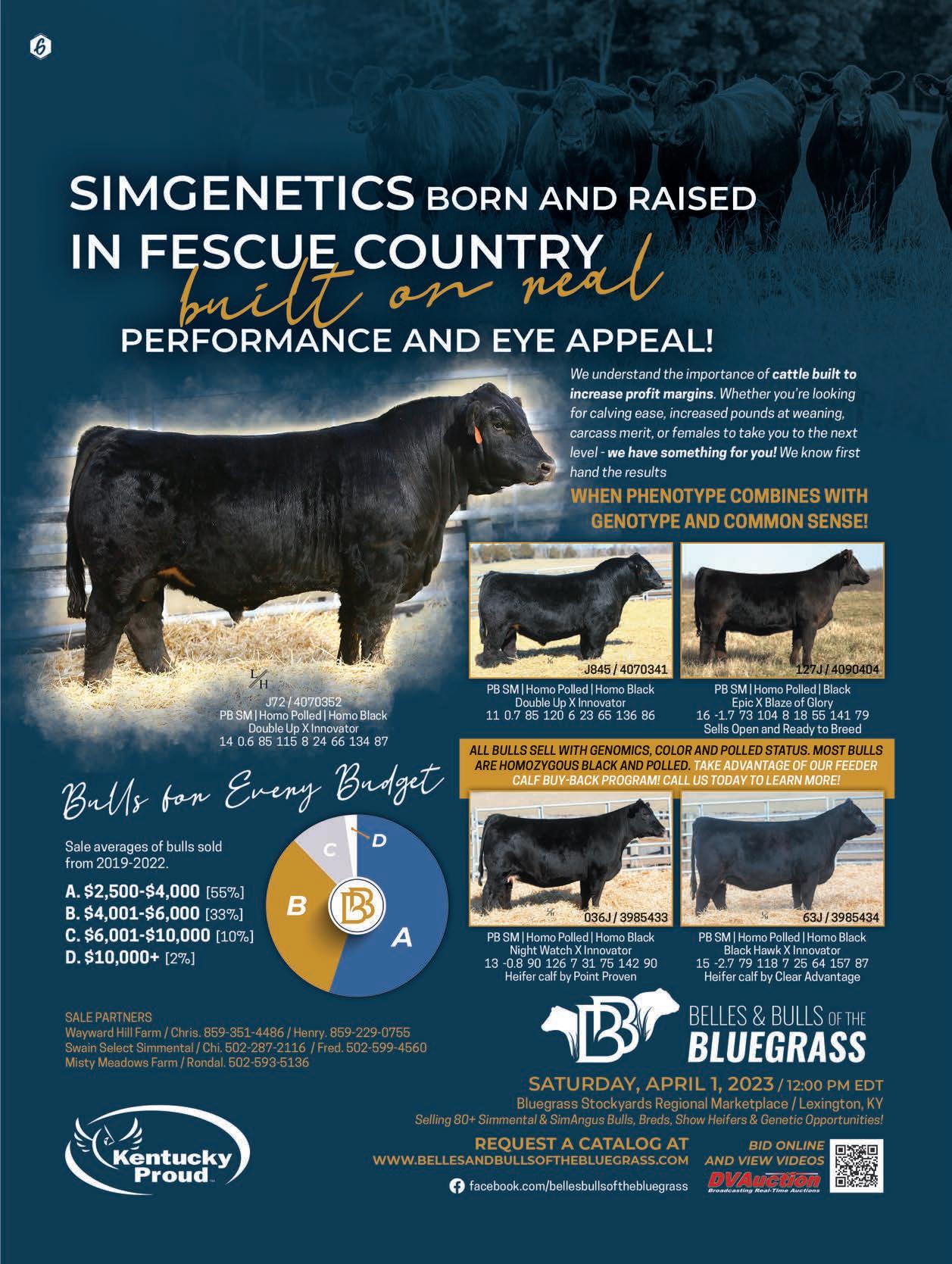




 by Rick Bourdon, Colorado State University
by Rick Bourdon, Colorado State University
“Composite” is one of the more popular buzzwords in the beef cattle industry today. Cussed and discussed, composite cattle have been accused by some of adding to the industry’s product inconsistency woes and touted by others as the solution to inconsistency problems. Composites are alternately considered a threat to and an opportunity for pure breeds. For all the controversy surrounding them, however, composites are little understood. My goal in this two-part series is to explain what composites are (perhaps clearing up some misconceptions along the way) and show why they can be useful to commercial cattle producers.
Composite individuals. Composite cattle, sometimes called synthetics, are hybrids. They have at least two breeds in their background and often more. What distinguishes them from typical crossbreds is not their genetic make-up per se, but rather the way in which they are used. Composites are expected to be bred to their own kind, retaining a level of hybrid vigor we normally associate with traditional crossbreeding systems, but without crossbreeding.
For example, consider the standard black baldy cow. She is a hybrid, typically the result of mating a purebred Angus bull to a purebred Hereford cow or vice versa. In all likelihood she will be bred back to a purebred bull of one of the parent breeds or perhaps of a third breed. Because she is to be used as part of a conventional crossbreeding system, e.g., a rotation of some kind, we would not consider her a composite animal. However, if her owner decided to breed her to black baldy sires, saving daughters and perhaps even sons as replacements, we would have to consider her a composite. She became a composite (as opposed to simply a crossbred) because the breeder chose to mate her to her own hybrid kind with the expectation of retaining a degree of hybrid vigor without further crossbreeding.
Admittedly, this definition leaves a little to be desired. What if I have a herd of composite animals and one day I decide to breed them to terminal sires or make them part of a conventional rotational crossbreeding system? Are they still composite cows? Whether you answer yes or no depends on how strict you want to be in your definition of a composite. Being fairly liberal in this regard, I would say yes because these cows were bred to be part of a composite breeding system and still have that potential. Others may disagree.
Composite breeds. Most of our experience with composites comes from plants. Plant breeders developed composites as a practical way for farmers in third-world countries to take advantage of hybrid vigor. The new plant populations were termed synthetic varieties. The analogous term in animal populations is composite
breeds. In keeping with the definition of a composite animal, a composite breed is then a breed that is made up of two or more component breeds and is designed to benefit from hybrid vigor without crossing with other breeds.
There are a number of breeds in this country that are made up of component breeds. Brangus, Santa Gertrudis, Simbrah, and RX3 are just a few examples. Whether these breeds have been bred in such a way that they retain significant hybrid vigor (i.e., whether they have successfully avoided inbreeding) remains an open question. If they have, then they can legitimately call themselves composite breeds. If they have not, then they are not composites, but simply newer breeds.
Perhaps the best way to answer this question is to compare the merits of a commercial breeding program involving composite cattle with the merits of more traditional systems. First, however, we need to decide how to make the comparison to set the criteria by which any given system will be evaluated. Following is a list of the criteria I would use.
1. Merit of component breeds
2. Level of hybrid vigor produced (HV)
3. Simplicity (EASE)
4. Replacement considerations (REPS)
5. Complementarity (COMP)
6. Consistency of performance (CONS)
Merit of component breeds. For any crossbreeding system to be effective, the breeds in the system must be well chosen. If you were a horse breeder, for example, and were designing the ultimate crossbred stadium jumper, you would be unlikely to include the Shetland Pony as a component breed. Shetlands are simply too small to be viable candidates given the needs of stadium jumpers. The same principle applies to cattle. Every breed included in the system must bring favorable attributes to the mix. Because this is true regardless of the type of crossbreeding system, merit of component breeds is not a very useful criterion for comparing kinds of systems, and I will not, therefore, use it to compare the use of composites with other crossbreeding systems. It is an extremely important criterion, however, for evaluating any particular crossbreeding program.
Level of hybrid vigor produced (HV). One of the chief reasons for crossbreeding beef cattle is to take advantage of hybrid vigor or heterosis. Any worthwhile crossbreeding system must provide an adequate amount of hybrid vigor, and within the limits of practicality, the more hybrid vigor the better.
Simplicity (EASE). Crossbreeding systems should be relatively simple in terms of resource and management requirements. Expensive systems or systems that require an unrealistically high level of management are unlikely to remain in place very long.
Replacement considerations (REPS). Some crossbreeding systems produce the replacement females needed for the cow herd. Others require replacements to be purchased or bred in a separate population. Producers should evaluate both kinds of systems from the standpoint of economics and personal preference.
Complementarity (COMP). Complementarity refers to the production of a more desirable offspring from the mating of parents that are genetically different from each other, but have complementary attributes. The classic example in beef cattle is “big bull–small cow” complementarity. The big bull provides growth and leanness to the offspring, the small cow requires less feed to maintain herself, and the result is a desirable market animal economically produced. We can also have growth–milk complementarity and cutability–quality complementarity to list just a couple of examples. Unlike hybrid vigor, which is a sort of genelevel magic causing a boost in the performance of hybrids, complementarity is the logical result of “mixing and matching” different biological types. Some crossbreeding systems — terminal sire systems in particular — make good use of complementarity. Other systems do not.
Consistency of performance (CONS). Ideally, a crossbreeding system should produce a consistent product. It is much easier to market a uniform set of animals than a diverse one. It is also easier to manage a cow herd that is essentially one biological type than a herd made up of several types, each with different requirements. Crossbreeding systems vary in their ability to provide consistency.
In the next article in this series, I will compare composite breeding systems with a more traditional crossbreeding system on the basis of the criteria listed above. The comparison should give you a feeling for the relative strengths and weaknesses of composite cattle.
Editor’s note: Part two in this series begins on page 32.
With the ability to increase the rate of genetic change comes the possibility to make mistakes at a faster pace. Breeding goals need to be clearly identified to ensure that selection at the nucleus level matches the profit-oriented needs of the commercial industry.
Inventory-based reporting captures more complete phenotypes on reproduction and longevity traits, and thus creates more accurate genetic selection tools.
3

It is important for the precision of the genetic evaluation to group animals treated uniformly. Proper reporting of contemporary groups reduces bias in EPD.

Phenotypes are the fuel that drives the genetic evaluation. Take pride in collecting accurate data. Report records on the complete contemporary group in order to paint the most accurate picture of the genetics in these cattle. If possible, collect additional phenotypes like mature cow weight, cow body condition score, udder scores, feed intake, and carcass data.
The quantity and quality of fertility traits need to dramatically improve. Providing disposal codes to identify why females leave the herd is vital. Commercial data resources, where the true economically relevant traits exist, are going to become more critical to capture. Breeders can help prove the genetics of their own seedstock by encouraging their commercial customers to join ASA’s Commercial Total Herd Enrollment (THE) option and add valuable data to the evaluation.
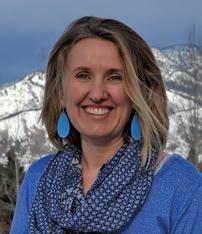


As the list of published EPD continues to grow, using economic selection indices will become even more helpful to reduce the complexity of multiple trait selection.
If the number of EPD increase, tools to reduce the complexity of sire selection for commercial producers must continue to develop. Breed associations and seedstock producers have the obligation to aid commercial clientele in making profitable bull selection decisions.

Genomic selection offers an opportunity to increase the rate of genetic change and break the antagonistic relationship between generation interval (the average age of the parents when the next generation is born) and the accuracy of selection (e.g., accuracy of EPD) — two components that determine the rate of genetic change. However, as with any tool, genomic information must be used correctly and to its fullest extent.
Adding a






is like knowing . . .
u 25+ calving ease scores
u 22 birth weights
u 25+ weaning weights
u 25+ yearling weights
u Stayability/productivity records on 15 daughters

u 6 carcass weights
u 10 marbling scores

u 8 ribeye area measurements
All this from a test you can complete before you wean the calf.
Jackie Atkins, PhD Matt Spangler, PhD Bob Weaber, PhD Wade Shafer, PhDAll animals within a contemporary group should be genotyped.
If genomic data are meant to truly enable selection decisions, this information must be collected on animals before selection decisions are made. The return on investment of this technology is substantially reduced if it is used after the decision is made. The ASA’s Calf Crop Genomics (CCG) program offers 50% off GGP100K test for breeders who commit to genotype the entire calf crop. See sidebar for more details.
The promise of genomic selection has always suggested the largest impact is for lowly heritable and/or sex limited (e.g., fertility) traits or those that are not routinely collected (e.g.,disease). This is indeed true, but it necessitates that genotyped animals have phenotypes. For sex-limited traits, this becomes a critical choke point, given that historically the vast the vast majority of genotyped cattle are males. If producers wish to have genomic-enhanced EPD for traits such as calving ease maternal and heifer pregnancy, they must begin or continue to genotype females. The ASA has a unique program called the Cow Herd DNA Roundup (CHR) to help herds collect female genotypes. See sidebar for more details.
A cow inventory reporting program, THE requires participants to provide annual reproductive and inventory status on their cow herd. THE is designed to improve quality of data submitted for the genetic evaluation, and in turn improve and develop reproductive EPD. By submitting data on the entire calf crop or contemporary group, breeders will receive more accurate predictions of their cattle. The ASA has four THE options to fit most seedstock and commercial operations.

The Cow Herd DNA Roundup (CHR) is designed to increase the number of female genotypes to better predict maternal traits, such as maternal calving ease. Genotyping entire herds reduces bias created when only the best cattle are genotyped. Gathering massive amounts of genotypes on entire cow herds will significantly improve the genomic predictions and rate of genetic progress. As parentage testing is included, CHR herds will have pedigrees validated through DNA. Participating breeders benefit from having genomically enhanced EPD on the entire cow herd — equivalent to a lifetime number of calf records in several traits for an exceptionally low cost.
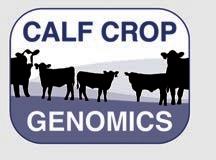
Calf Crop Genomics, a research project launched by the ASA in collaboration with Neogen Genomics, offers 50% off GGP100K genomic test including parentage ($25 compared to $50 equivalent test) to participating breeders who test their entire calf crop. Genotyping entire calf crops is important to use genomically enhanced EPD (GE-EPD) for selection decisions, reduce selection bias in genomic predictions, and increase the volume of genotyped animals for future improvements to genetic predictions. The latter two points make any singular genomic test in the future better for all members using genomics.




Do not forget the value in correcting parentage errors, tracking inbreeding levels, identifying unfavorable haplotypes, estimating breed composition, and estimating retained heterozygosity. All of these can be garnered from populations that have a well-defi ned set of genotyping protocols.
The beef industry should be congratulated for the rapid adoption of genomic technology, but there is a lot of work to do. Of critical importance is the fact that genomic technology will continue to change and does not replace the need for phenotypes nor the fundamental understanding of traditional selection principles including EPD and accuracy.
Despite the importance of carcass traits to our industry, few producers devote resources to collecting and recording actual carcass data. While the Carcass Merit Program (CMP) is a valuable progeny test, it is limited in the number of records produced. We cannot depend on the CMP alone to bring in carcass data. In the age of genomics, it is clear we need genotypes on animals with actual carcass phenotypes. Adding another layer of commitment to predicting carcass traits, the ASA initiated a new program, called the Carcass Expansion Project, in the fall of 2018 to increase the number of carcass records on genotyped animals. The ASA is are ramping up both phenotypic and genotypic data collection on terminal calves — a vital part of our vision.

Genotypes can provide useful information in addition to predictions

 by Rick Bourdon, Colorado State University
by Rick Bourdon, Colorado State University
In part one of this series, I defined composite cattle and developed a list of criteria for judging any crossbreeding system. The list is reproduced below. You can find a more detailed explanation of the list in the first article. My purpose in this second article is to evaluate composite breeding systems for the criteria in the list and in so doing give you a feeling for the relative strengths and weaknesses of composite cattle.
breed composition than their mothers, will be bred to a different sire breed. As shown in the Figure 1, the entire scheme appears graphically as a rotation, with replacements moving sequentially from their dams’ breeding pasture to the next breeding pasture in a circular fashion.
1. Merit of component breeds

2. Level of hybrid vigor produced (HV)
3. Simplicity (EASE)
4. Replacement considerations (REPS)
5. Complementarity (COMP)
6. Consistency of performance (CONS)
To see how composite cattle stack up for these criteria, let’s first establish a baseline by evaluating a betterknown traditional system; the three-breed pasture rotation. In this system there are three breeding pastures. Purebred bulls of three breeds are assigned to these pastures, one breed per pasture. Cows are allotted to pastures according to their breed composition; those with the least amount of a particular breed in their background are assigned to the pasture containing bulls of that breed. Replacement daughters, having different
Hybrid vigor, replacement considerations, and accuracy of genetic prediction. My evaluation of the three-breed rotation is summarized in the accompanying “report card.” The system does well (scores a “+”) in the hybrid vigor category. A large proportion of F1 or maximum achievable hybrid vigor — in theory 86% — is maintained with the rotation. The system also scores well in the replacement category because it produces all its own replacement females. Accuracy of genetic prediction is good, too, because the purebred bulls used are likely to come with state-of-the-art EPD.
Simplicity. The three-breed rotation is not simple from a management standpoint, however. It requires at least three breeding pastures, and if heifers are bred separately from cows, an additional one to three pastures. Fencing, sorting animals, and keeping bulls in the right pastures can be painful. With cattle divided among a number of pastures, opportunities for high density/short duration grazing and related grazing schemes are limited. Furthermore, the system is infeasible for small herds — those using less than three bulls. Complementarity and consistency. The three-breed rotation fares poorly for complementarity and is questionable for consistency of performance. Because breed composition varies considerably within the herd (cows can be as much as 57% of a particular breed or as little as 14% of the same breed), the only way to be sure of consistent performance is to use breeds that are very
Editor’s note: This is the second of a two-part series. Part one begins on page 28.similar in biological type. Doing so, however, rules out any possibility of breed complementarity. You could not, for example, use one breed that excels in milk production and another that excels in growth rate (a classic complementary combination) without producing sets of calves within a crop that differ a good deal in these traits. So if complementary breeds are used, consistency suffers, and if breeds are chosen for consistency, complementarity is eliminated.
Simplicity. Now consider the use of an existing composite breed. From a management standpoint, breeding composites is like breeding straightbreds; only one breeding pasture is needed (two if heifers are bred separately). All the problems associated with having multiple breeds are eliminated, and for this reason, the greatest virtue of a composite program may well be simplicity. Composites can be used successfully in small herd; seven herds with only one sire, and with composites there should be no conflict between the breeding program and forage management. I give them a “++” in the EASE category.
Replacement considerations. Like straightbreds, composites produce their own female replacements, so composites score well for replacement considerations. Composites have the potential to produce their own replacement males as well, though for most commercial producers the extra level of management and record keeping required to do a good job of home-raised bull selection is probably impractical. Most composite bulls will be purchased from composite seedstock producers.
Hybrid vigor. Composite animals exhibit considerable hybrid vigor. For those of us schooled in the importance of crossbreeding for maintaining hybrid vigor, the idea of getting sustained vigor without crossbreeding may seem like voodoo genetics. In fact, it is an algebraic consequence of hybrid vigor theory. The amount of vigor depends on the number and proportions of component breeds in the composite. To get an idea of the fraction of maximum (F1) hybrid vigor that is maintained in advanced generations of a composite, you can use the following formula:
Proportion of F1 vigor retained , where pi is the proportion of the “ith” breed in a composite made up of n component breeds, and ∑ is the mathematical symbol for summation.
The formula looks worse than it really is. Take the RX3 breed for example. RX3s are 1/4 Hereford, 1/4 Red Holstein, and 1/2 Red Angus. The fraction of maximum hybrid vigor retained in RX3s can be estimated as:
In other words, RX3 cattle can be expected to exhibit 63% of the hybrid vigor typical of a first cross animal. A four-breed composite with equal fractions of each component breed would be expected to show 75% of F1 vigor, a similar eight-breed composite 88%. These are respectable amounts of hybrid vigor. Hence the “+” rating for composites in this category.
Breeders often ask, “After a while, won’t a composite breed become just another breed?” In other words, won’t composites lose their ability to retain hybrid vigor over time? The answer is no if inbreeding is avoided. On the other hand, if the composite breed is allowed to become inbred, as purebreds are, it will indeed become just another pure breed.
Consistency. Composites score high for consistency of performance. This comes as a surprise to many. Classical genetics texts are full of examples of increased variation in the progeny of hybrids. The books are not wrong, but the examples inevitably involve traits that are affected by just a few genes, so-called qualitative traits. In beef cattle, coat color is an example of a trait of this kind, and if the component breeds in a composite differ in color, the composites will be of many colors as well. The same is not true for quantitative traits affected by many genes. These include the majority of economically important traits: fertility, survivability, growth rate, milk production, carcass characteristics, and so on. Experimental data suggest that composites are as uniform for these traits as purebreds. And when compared to hybrids from a rotational crossbreeding system, composites are inevitably more uniform because they do not vary in breed composition.
Complementarity. Does a composite breeding program make use of complementarity? Strictly speaking, no. Because the cattle within a composite population are all of the same basic biological type, there is little opportunity for complementarity from composite matings — no “big bull–small cow” possibilities. However, complementarity does come into play in the formation of composite breeds. We could, for example, include both Herefords and Holsteins in a composite to take advantage of their complementary characteristics. (Note that this would be an unlikely pair of breeds to use in a rotational system using purebred sires; the fluctuation in offspring types would be too large.)

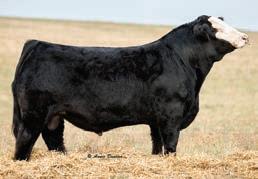




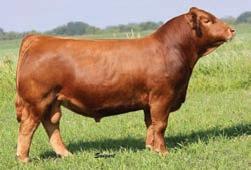








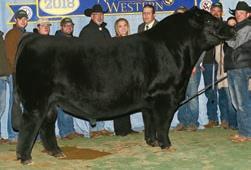
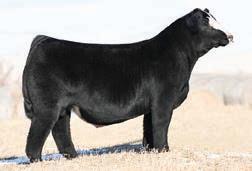





























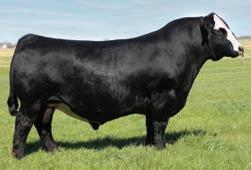




































Simply breeding composites to composites as though they were purebreds is not the only way to use composites commercially. A modified scheme (and, I confess, a favorite of mine) is the composite/terminal system. In this system, about half the herd of composite females, typically consisting of the heifers and younger cows, is bred to composite bulls, and the other half is bred to terminal sires (see Figure 2). Replacement heifers come from the composite matings, and all terminally sired offspring are marketed. Such a system involves an additional breeding pasture, but this modest loss in simplicity comes with an additional measure of complementarity (big bull–small cow) and hybrid vigor.
animals from extreme breeds or crosses of similarly extreme breeds. In other words, they are the result of poor crossbreeding decisions by commercial cattle breeders. With a composite breed, crossbreeding decisions are made when the breed is formed. Thus the decisions as to what breeds to put in the crossbred mix are taken out of the hands of commercial producers and placed in the hands of a much smaller number of composite seedstock breeders. Yes, commercial producers still decide what composite breed to use, but they are unlikely to find an extreme one. That is because (with rare exceptions) composites are expected to be complete and balanced in performance, and only those composite breeds that fulfill this expectation are likely to survive. In other words, the variation among composite breeds will be considerably less than the variation we now have among pure breeds.
Commercial or seedstock? Finally, composite cattle break the seedstock/commercial barrier. With traditional crossbreeding systems, crossbreds are the commercial cattle of choice due to their hybrid vigor, but only purebreds can be seedstock. Composites can be either or both. There is no genetic reason why a herd of good commercial composite cattle could not become a seedstock herd.
Will composite breeding systems be the wave of the future? That depends on the willingness of both seedstock and commercial breeders to break with tradition. It took a long time for cattle producers to accept the idea of crossbreeding. Acceptance of the composite concept may take just as long. However, the case for composite cattle is a strong one, and if common sense prevails, we will see increasing numbers of composites in the relatively near future.
“Niche” cattle. As you can see from the “report card,” composite cattle have a lot going for them and relatively few drawbacks. Composites have some additional attributes not readily apparent from the report card. They can be designed to fit a specific environment or niche. The Barzona breed is a good example. Barzonas were developed specifically for the desert Southwest, and they combine characteristics from several breeds that make them particularly adapted to that environment. Wherever the environment poses unique challenges, there is an opportunity for an appropriately designed composite breed.
Reduced variation industry-wide. Composites have the potential for “standardizing” commercial cattle, thus reducing the variation we currently see in market animals. This statement may seem counterintuitive; how can variation be reduced by adding more breeds to the already large number of breeds available? Look at it this way: Today’s problem cattle from a feedlot and carcass perspective tend to be biologically extreme animals. They are either purebreds or high percentage
Dr. Rick Bourdon taught at Colorado State University’s Department of Animal Sciences, first as an assistant professor and later an associate professor, for 15 years. His work focused on beef cattle breeding, genetics, and more. Bourdon also served as the Executive Director for the Red Angus Association of America. He has authored or coauthored over 200 professional and popular press articles, book chapters, and abstracts on topics related to beef cattle breeding and genetics.



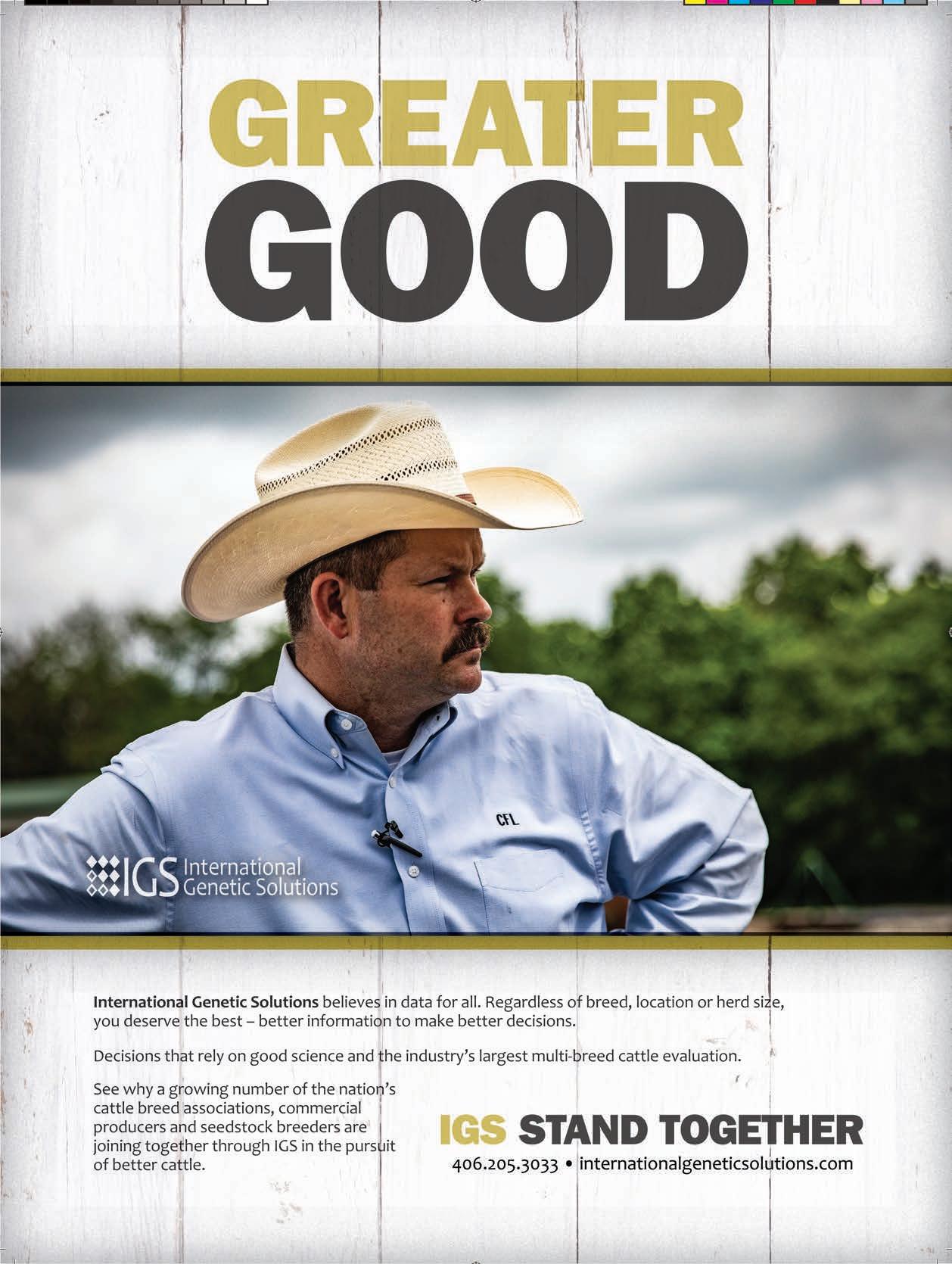

 by Rick Bourdon, Colorado State University
by Rick Bourdon, Colorado State University
There is a growing interest among commercial cattle producers in the use of composite cattle as an alternative to crossbreeding. Naturally there is a parallel interest among seedstock breeders, many of whom are currently purebred breeders, in producing composite seedstock. What these breeders need to understand, however, is that there are fundamental differences between breeding composite seedstock and breeding purebreds. My purpose in this set of articles is to make these differences clear.
There are two underlying reasons why composite and purebred breeding differ. The first is that in composite breeding there are two distinct breeding stages: (1) forming the composite, and (2) breeding the composite once it is formed. The second reason is that in composite breeding we are interested not only in improving breeding value through selection (our sole genetic goal in purebred breeding), but also in maintaining a high level of hybrid vigor. These basic, theoretical differences between the two types of breeding spawn a number of practical differences. In this first article, I look at these differences in the context of composite breed formation. In the sequel, I look at them in the context of breeding the formed composite.
If you are not interested in creating a new composite breed, but simply want to breed cattle of an existing composite breed, the second part of this series will be most useful to you. We are at a point in time, however, when many people are contemplating creating new composites. Some of these breeds are in the initial stages of breed formation. Others are just a twinkle in a breeder’s eye. In either case, the following points should be helpful.
Selection of the breeds and the proportions of those breeds going into a composite is the critical step in composite breed formation and may well determine whether a breed succeeds or fails. If composite breeders do a carefully researched and conscientious job of between-breed selection, then the newly formed composite will not need much genetic change that can now only be achieved through slow-paced within-breed selection. In other words, if the composite is put
together in such a way that it exhibits close to optimum performance in the economically important traits when it is first formed, then any genetic change following breed formation can be considered fine tuning. Following are some ideas to keep in mind when designing a composite breed.
Define how the breed will be used. When companies come out with a new product they almost always know exactly how the product will be used. Without that knowledge it would be hard to both design and market the product. The same is true with composites. We need to know how the composite will be used by commercial producers. We need to define the geographical areas and environment/management niches appropriate for the composite breed.
It is also important to define how the breed will be used in the context of mating systems. Most composites are likely to be “all-around” or general purpose breeds because that is the kind of animal required for the simplest or “pure” form of commercial composite breeding systems. These breeds should be strong in all traits, or at least not weak in any important trait. They must combine good maternal characteristics with carcass quality and cutability. Other composites may be specialized maternal breeds designed to be bred to a terminal sire. They will probably be smaller, strong in maternal traits and adaptability, and have carcass characteristics and carcass quality attributes that will complement the carcass characteristics of the terminal sires. We may see specialized paternal composite breeds or terminal sire breeds for producing either the ultimate market animal or simply live calves out of first-calf heifers. Whatever the potential use for a composite breed, those who form the breed should keep that use in mind when designing the composite.
One of the unique aspects of composite breeds is that they can incorporate component breeds that most commercial producers would be reluctant to use.
Aim for optimums. There may not be optimum levels of performance for all traits, but common sense tells us that there are optimum levels of performance for some traits. Milk production and mature size come to mind right away. Clearly there are limits to the amount of milk a beef cow can efficiently produce and limits to the mature weight she can efficiently maintain. Admittedly, optimum levels for traits like these are not easy to determine, but to the extent that they can be defined, we should try to come close to them in composite breed formation. In other words, choose breeds and breed proportions in such a way that optimal levels of performance are reached in the first composite generation.
Exploit breed differences. One of the unique aspects of composite breeds is that they can incorporate component breeds that most commercial producers would be reluctant to use in any kind of a crossbreeding system involving purebred sires. Consider the Jersey breed. Jerseys have a lot to offer: excellent fertility and milk production, lovely udders, great paternal and maternal calving ease, low absolute maintenance costs, and highly marbled, tender meat. They also have a downside: slow growth rate, poor feed efficiency and carcass cutability, small carcasses, and a nasty disposition (in bulls). The negatives are enough to keep most commercial producers from using Jersey sires. However, a composite containing the right dose of Jersey combined with other component breeds that compensate for the Jersey’s weak points could be really useful. In effect, by “mixing and matching” breeds in composite formation, it is possible to make use of complementarity for the production of a more desirable offspring from the mating of parents that are genetically different from each other, but have complementary attributes.
There are a number of important traits for which EPD and other performance information are rare. This is usually because performance in these traits is hard to measure. Temperament and udder conformation are typical examples. Without performance data, it is very difficult to change these traits with traditional within-
breed selection, and so it is precisely these traits that we would like to “get right” in the breed formation stage of composite breeding. Fortunately, breed differences in many of these traits are large. Herefords, for example, are quite uniformly docile (with exceptions, of course), and Jerseys are known for their strong udder suspension and small teats. Because of their performance in these traits, inclusion of Herefords and Jerseys in a composite could be very beneficial. Considering hardto-improve traits during composite breed formation is another way of exploiting breed differences.
One of the most persistent misconceptions about composites is that they lack uniformity. Producers assume that if hybrids are mated to hybrids, the offspring will vary across the board. We know from theory and from experimental results that this is not true. Composites are as uniform as purebreds for almost all economically important traits. Only in those traits affected by few genes (coat color is the best example) will composites clearly be less uniform. Color uniformity may be something to consider when choosing component breeds. This may seem silly because we don’t eat the coat, after all, but it is amazing how uniformity of color affects people’s perception of uniformity in general.

Choose the best foundation animals. The choice of what breeds to include may be the single most critical step in composite breed formation, but the breeder’s responsibility does not end there. We all know there can be tremendous variability within breeds. It is important, therefore, that composite breeders be selective in their choices of foundation animals. It would not do, for example, to pick just any Hereford or Jersey bulls simply because they were purebred and available. What if they were not representative of those breeds or had
(Continued on page 46)
To learm more about the CMP visit www.simmental.org, then click Carcass Merit Program under the Commercial tab.

Questions, contact cmp@simmgene.com for more information regarding this program.
ASA# 3999260
CMP Class of 2023
The American Simmental Association Carcass Merit Program (CMP) is the beef industry’s most demanding and informative young sire test. The program is a hallmark of ASA breed improvement for economically relevant carcass traits. Commercial producers play an integral part in this project.


u $65 for each AI-sired calf with carcass information
u Free semen on top young herd sires
u Free ASA Genetic Evaluation on your cow herd
u Free genotyping on terminal progeny

u Keep any or all replacement females
*The CMP is a structured young sire progeny test. Participating cooperator herds will random sample their cow herd with CMP semen, and the resulting male (or female) progeny will be harvested with individual carcass data gathered. ASA Staff will work with cooperator herds to provide bulls that fit the general criteria of your management program; however, only bulls nominated into the CMP program may be used. Producers are encouraged to be somewhat proficient in Microsoft Excel for accurate and consistent record keeping.
IR/JLN Boomer J425We would like to work with you on your sire-identified, terminal calves.

u Free semen on the nation’s top herdsire prospects
u Free genetic evaluation (EPD and Selection Indexes) on your cow herd
u $65 paid per CMP sired carcass record

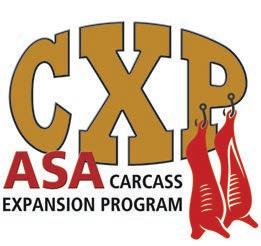


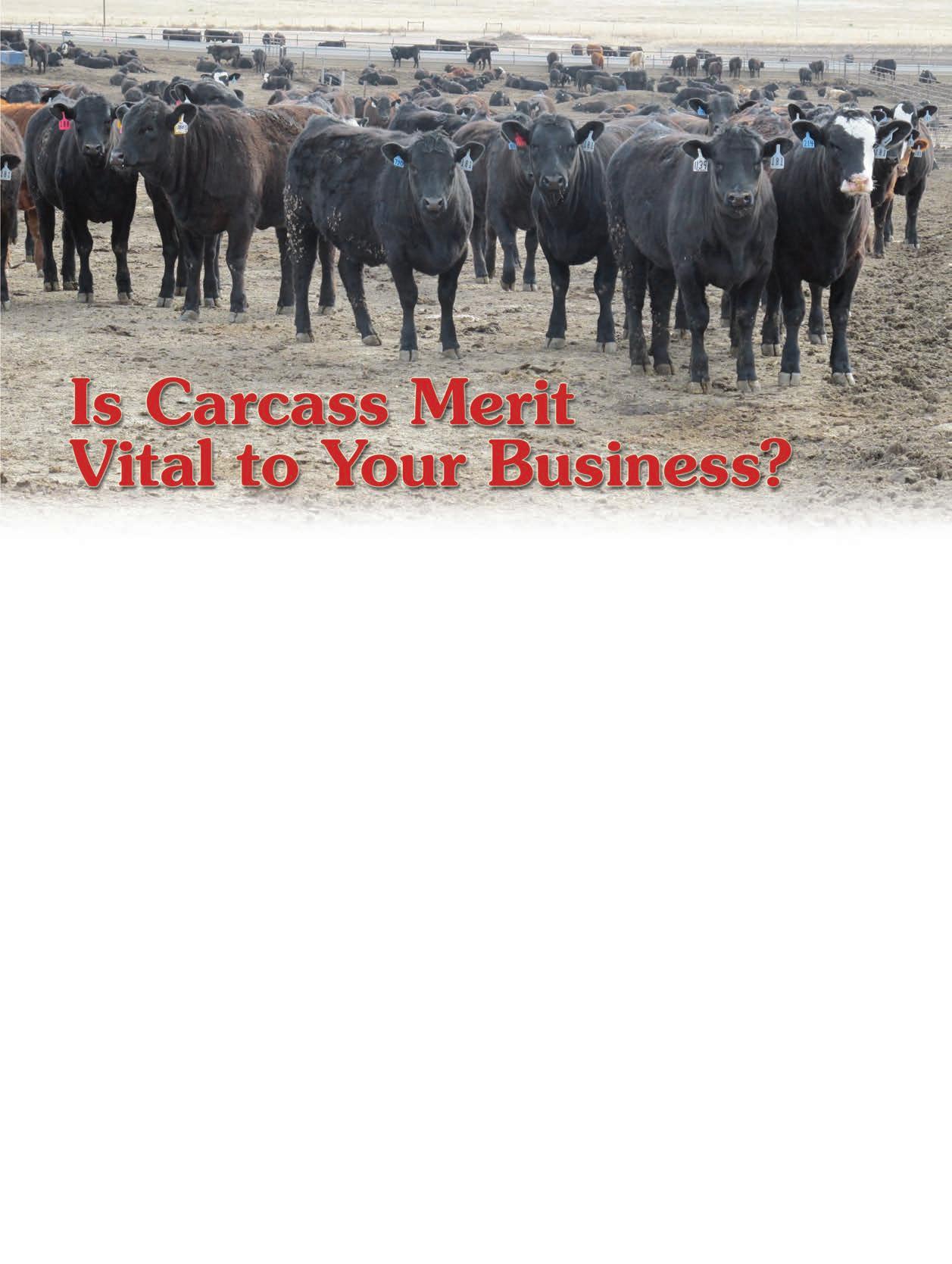
u DNA tests performed on terminal calves

*This is a structured young sire test so please inquire about qualifications and expectations.
u Free 100K GGP DNA test on all sire-identified terminal calves with carcass data
u DNA Parentage included
u Tissue Sampling Units provided at no cost
*This is an ongoing research project. Participants are limited so please inquire about availability.
For more information regarding both programs,contact:
cmp@simmgene.com for CMP inquiries
lgiess@simmgene.com for CXP inquiries
or daughters of unrelated sires from each component breed. To see why, consider the extreme case of a fourbreed composite in which one component breed’s contribution came in the form of semen from a single sire. Every member of the first generation of composite animals will be a grandson or granddaughter of that bull. He will appear repeatedly in the pedigrees of future generations, and the result is an increase in inbreeding. What is the minimum number of sires needed to represent a component breed? I don’t really know. One is too few. Four or five, if they are truly unrelated, should probably be adequate. A dozen would be plenty.

Order of crossing. Say you were designing a fourbreed ABCD composite. Would the order of the initial crosses make a difference? In other words, would it matter whether the first composite generation was (AB)(CD), (AC)(BD), or (AD)(BC)? The answer is yes and no. If the component breeds differ in maternal ability and/or if specific two-breed crosses differ in hybrid vigor, the performance of the first generation of composites and, to a lesser degree, the second generation, will be affected by the order of crossing. The performance of the third and more advanced generations should be unaffected, however.
Composites are as uniform as purebreds for almost all economically important traits.
some glaring faults? Furthermore, we sometimes want to include only certain types within a component breed. I can think of several breeds that have a lot to offer, but are (in my opinion) too big at birth and maturity. However, there are bulls within those breeds with atypically low birth and mature weight breeding values, and these are the bulls I should hunt for. If color uniformity is a concern, foundation animals should be screened for their color genotype as well. A good job of composite breed formation means a good job of both betweenand within-breed selection.
Sample widely. The key to maintaining hybrid vigor in a composite is to avoid inbreeding. The way to prevent inbreeding at the breed formation stage is to establish as broad a genetic base as possible. From a practical standpoint this means including in the foundation population a number of unrelated sires
Complexity. The biggest advantage of using composites is that they are easy to manage. Unfortunately, the same cannot be said for creating composites. In assembling a four-breed composite you could be dealing with purebreds of all four breeds, two two-breed crosses, and full composites all at the same time. Creating a composite breed is not something to be entered into lightly.
Time required. Composite creation can be time consuming too. I estimate that, starting from scratch, it takes a decade to make the crosses for a four-breed composite and replace the foundation animals completely with composites. If you are getting on in years, composite development may be like planting shade trees; the next generation will be the first to enjoy the fruit of your labor. On the other hand, if you already have a set of two-breed cross females and can find the right two-breed F1 bulls, you can have four-breed composite calves on the ground next year.
In the next article in this series I discuss breeding composites once the composite breed has been put together.
Editor’s note: Part two in this series begins on page 50.

Maternal Trait Genetic Trends
Terminal Trait Genetic Trends

Simmental genetics bring calving ease, early growth, and cow longevity while keeping feed costs at a minimum.
$All Purpose Index ($API)
Compare the profit potential of two Simmental bulls using $API
1 2 3
Bull A’s $API = $120 and Bull B’s $API = $180
Breeding 25 females/year
Used for 5 years
1 2 3
Bull $API # Females # years using Profit per year the bull Potential
A $120 X 25 X 5 = $15,000
B $180 X 25 X 5 = $22,500
Just like an EPD, compare two bulls to see the expected difference in profit. Bull B is likely to result in direct revenue and expense savings of an additional $7,500 over the course of five years. Plug in your numbers for , , and to compare your potential earnings.

$Terminal Index ($TI)
Trait
Simmental rank compared to other Continental breeds Marbling First

Carcass Weight Second Back Fat Second
Post Weaning Gain First
Source: USDA MARC
Simmental cattle bring marbling and growth without too much fat. Simmental genetics perfectly complement British strengths and weaknesses for an ideal carcass.
Did You Know?
27% $TI
26%
$API
u $API increased 27% and $TI increased 26% in the last 20 years. This translates to an average increased profit of $3,375 per bull when used to sire replacement heifers and harvesting remaining calves or $2,000 when all calves are harvested.
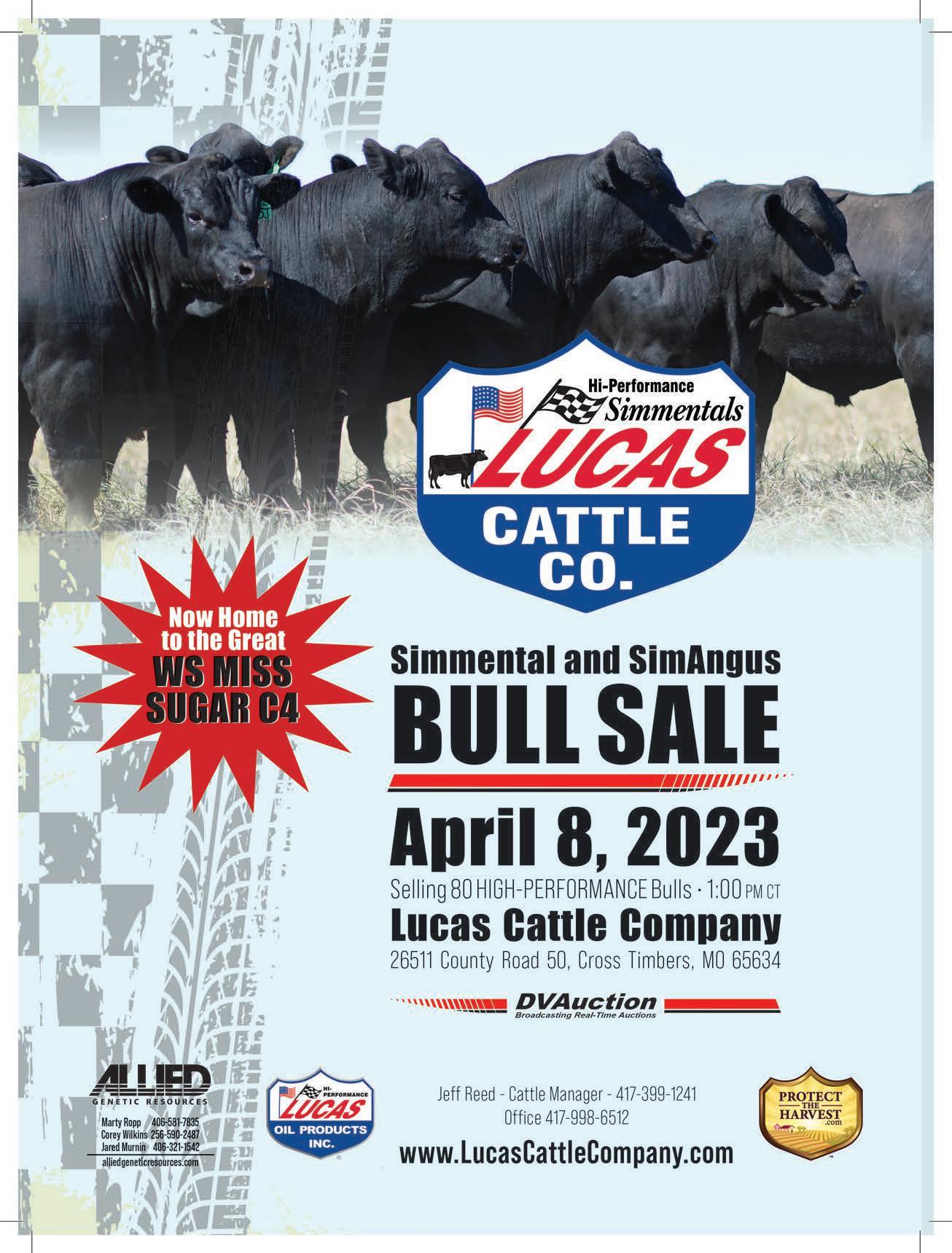
In part one of this series, I pointed out that composite breeding differs from purebred breeding because in composite breeding we are interested not only in improving breeding value through selection, but also in maintaining a high level of hybrid vigor. I discussed this difference in the context of forming a new composite breed. In this article, I examine the same thing, but this time in the context of breeding the formed composite.
Once a composite breed has been assembled, breeding composite animals is much like breeding purebreds. The principal objective is to improve breeding value through within-breed selection. The tools are the same: pedigree and performance records, EPD, visual appraisal for soundness and (possibly) color uniformity, etc. Selection of composites differs from purebred selection only with regard to certain constraints needed to maintain hybrid vigor within the composite population.
In purebred breeding, we usually do not concern ourselves much with hybrid vigor. Because purebreds are likely to be crossed with cattle of other breeds at the commercial level, hybrid vigor within purebred populations is not a major priority. Composites, on the other hand, are designed to be used commercially without crossbreeding. Any loss of hybrid vigor among seedstock composites can therefore mean a loss of hybrid vigor at the commercial level. The key to maintaining hybrid vigor within composite seedstock populations is to avoid inbreeding. Following is a list of ways to do that.
Have a large herd. The rate of inbreeding is much faster in small populations than in large ones. If you have created your own composite breed and keep the herd closed (no animals from outside the herd allowed in), it is important that your herd be large enough that inbreeding accumulates very slowly. How large is large
enough? That depends upon the rate of inbreeding you are willing to accept. I suggest a minimum of 500 cows.
Cooperate with other breeders. Your herd may be small, but if you work with other seedstock producers by exchanging semen, bulls, or females, the “effective” size of the composite population can be kept large. Cooperative arrangements of this sort essentially replicate the structure of pure breeds.
Avoid linebreeding. Linebreeding, the mating of individuals within a particular line or strain, is a timehonored practice in purebred breeding. Purebred breeders do not hesitate to make half-brother–halfsister matings or build pedigrees laced with sons and daughters of a particular bull. However, if certain lines become prominent within a composite population, inbreeding occurs much more rapidly.
Avoiding linebreeding basically means not overusing any one sire or line of sires. This is a departure from purebred breeding where entire breeding programs have been built around one outstanding animal. Compared to purebred breeding, composite breeding places less emphasis on selecting superior individuals and more emphasis on selecting better groups of animals.
It is possible for a number of prominent lines to be developed within a composite breed and then for commercial breeders to avoid inbreeding within their commercial composites by judiciously choosing sires from the various lines. The problem with this idea is that it misses the main point of the commercial composite breeding system: simplicity. If commercial producers must keep bulls from one composite line separate from bulls from another line, then, from a management perspective, we are back to rotational crossbreeding and the headaches associated with it.

There is a perception among some breeders that selection should be avoided in a formed composite because it leads to inbreeding, presumably through linebreeding (I cannot think of any other mechanism). Indeed, it is true that intense selection among purebreds has in some cases resulted in linebreeding. The highestperforming animals were often relatives, and selection of the best performers amounted to de facto linebreeding. This need not be the case, however. We can select better-performing animals and pay attention to the pedigree relationships of those animals at the same time. Selection within a composite breed is important just as selection is important within a pure breed.
Reconstitute the composite from time to time. One nice thing about inbreeding is that it can be “undone.”
As soon as inbreds are mated to unrelated animals, the offspring are no longer inbred. In a composite context, inbreeding can be undone by adding to the composite population new first-generation composites, particularly animals whose purebred parents or grandparents are relatively unrelated to the purebreds that formed the foundation for the original composite population. I like to call this “reconstituting” the composite. Reconstitution can be a pain, but it is the best solution for a composite population that is nearing the point of too much inbreeding.
Composite cattle are new to most producers, and like any new product, they will take some selling before they are widely accepted. Marketing composite cattle presents some real challenges and some real opportunities for those who can meet the challenges.

Name recognition. If you say you raise Angus cattle, most everybody in the cattle world will know what you are talking about. If you say you raise “Range Cruisers,” however, you are likely to get some funny looks. Name recognition is very important to marketing, and for this reason, we want a new composite breed to receive broad exposure as quickly as possible. This may be difficult, especially for newly formed composites developed by a single breeder.
Accuracy of genetic predictions. To be competitive with purebreds, composite seedstock should come with a similar level of genetic information on individuals. They should have EPD and accuracies for the more important traits. At the moment, few do, partly because many composite breeds are small and unorganized, and partly because the multi-breed/hybrid nature of composites confuses the issue from a technical standpoint. The technology for composite EPD production is available. Lacking are mechanisms for accumulating data and for tying composite data to existing purebred databases. These problems can and will be solved if purebred organizations cooperate.
Considering the need for large population size in order to avoid inbreeding, the need for name recognition, and the need for performance comparisons and EPD, a strong case can be made for composite breed organizations. Such groups could be similar to purebred associations in terms of data handling and promotional responsibilities. In fact, they might even be offshoots or subsidiaries of purebred associations.
Famous sires. Purebred breeders often promote their cattle by emphasizing the merits of individual sires they have bred, purchased, or otherwise used. Great importance is placed on a relatively few famous indi-
Because breeding composite seedstock places emphasis on superior groups of animals rather than superior individuals, the basic misconception about lack of uniformity will require educational effort.
viduals. In composite populations, dependence on a few heavily promoted sires leads to inbreeding. Only in the largest composite breeds, where there are many seedstock breeders and a broad source of germplasm, will breeders be able to market semen from famous bulls in the same way that purebred breeders do and still avoid significant inbreeding. For most composite breeds, the best strategy may be to promote breeding programs rather than individual animals.
Perceptions about uniformity. Even if composite seedstock breeders pay special attention to uniformity, particularly color uniformity, during formation of the composite or afterward, the common misconception that composites lack uniformity is likely to persist at least for a while. Confronting the basic myth about hybrids and variability will take a concentrated educational effort.
Breeding composite cattle will not be easy. Not only are the genetic aspects of composite formation and production daunting, there are likely to be organizational, educational, and political difficulties as well. I doubt that fortunes will be made overnight. Still, composite breeding is probably the ultimate challenge for a seedstock producer.
Dr. Rick Bourdon taught at Colorado State University’s Department of Animal Sciences, first as an assistant professor and later an associate professor, for 15 years. His work focused on beef cattle breeding, genetics, and more. Bourdon also served as the Executive Director for the Red Angus Association of America. He has authored or coauthored over 200 professional and popular press articles, book chapters, and abstracts on topics related to beef cattle breeding and genetics.




















Michelle,
Steve,
Springer 3119 310th St • Cresco, IA 52136 641-330-6654 sprinsim@iowatelecom.net
WWW.SPRINGERSIMMENTAL.COM


Cow Camp Ranch
Kent, Mark and Nolan Brunner 3553 Upland Rd. • Lost Springs, KS 785-466-6475 Kent
785-466-1129 Nolan 785-258-0173 Mark nolan@cowcampbeef.com
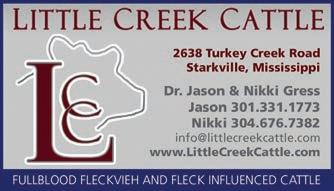

Spring Turn-Out Sale – Friday, April 21, 2023
Spring Bull Sale – Friday, February 2, 2024









Carol Dixson, Kevin Dixson, & Lyle Dixson, D.V.M.
13703 Beaver Creek Rd • Atwood, KS 67730

785-626-3744 • drlyle@live.com

www.dixsonfarms.com
DX
Longevity with Legacy View data and videos at littlebitterrootranch.com
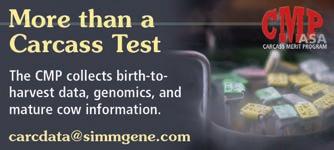
Sale Day: February 2024 – MT Livestock Auction – Ramsay



FORSTER FARMS
Verlouis Forster Family 74096 Road 434
Smithfield, NE 68976-1039

Ph 308-472-5036 Verlouis 308-991-2208 Alan Cell Email: alan_forster@hotmail.com

“Red and Black, Polled, Pigmented Simmentals”
Black Simmental Bulls & Females Purebred to Percentage



Jay & Kim Volk
Clark & Leslie Volk
Bob & Jeanette Volk
Jay 402-720-7596 • Clark 402-720-3323

20604 US Hwy 30 • Arlington, NE 68002 volkjk@aol.com • www.jandcsimmentals.com




J&C Annual Bull Sale –January 27, 2024























Montana State University Extension
Survey results have shown Montana State University (MSU) researchers that farmers and ranchers throughout Montana and the West experience, on average, a medium level of stress, which could impact their sleep, physical health, mental health and/or relationships, according to Michelle Grocke, health and wellness specialist with MSU Extension and assistant professor in the MSU Department of Health and Human Development.
Agricultural stress can be caused by a range of issues, she said, including commodity prices, weather, crop yield, debt, passing a farm or ranch to the next generation, family issues, injuries, and illness. She added that it can lead to mental illness, increased risk of suicide, and other health issues.
Grocke and her collaborators have launched several projects to help combat this stress. These efforts include a website that provides resources, a program that provides mini-grants for people across the Western US who want to improve the mental wellness of those in their agricultural communities, and a project that provides free telehealth counseling services to any Montanan working in agriculture.
“MSU Extension is trying to reach people where they’re at and make information accessible to them,” Grocke said. “If we want to help Montanans — especially if they’re not going to be the ones knocking on our door asking (for help) — it seems like a really good place to focus our energy and time.”

In 2019, a group of individuals and organizations from across Montana, led by MSU Extension and first funded by the Montana Healthcare Foundation, collaborated to provide resources and solutions for farmers and ranchers under stress. The team, known as the Montana Farm/Ranch Stress Prevention Advisory Council, created a website that hosts resources for farmers, ranchers, and community members to better understand the causes of stress and how to manage it. The website is called the Montana Farm and Ranch Stress Resource Clearinghouse, and it includes stress management information and links to telehealth counseling services across Montana. Since its launch in the summer of 2020, more than 14,000 people have visited it, Grocke said. Scan the QR code to visit the site.
“We’re trying to add a lot of videos and podcasts and be more creative in how we’re getting content out to Montanans,” Grocke said.
In addition, a USDA-backed Western Regional Agricultural Stress Assistance Project, or WRASAP, has funded research and provided mini-grants for people across the West who want to improve mental wellness in agricultural communities.
The $7.1 million WRASAP grant, of which Grocke is one of the leaders, is a collaboration among individuals and organizations from 13 Western states and four territories. The goals of the grant include conducting research to learn more about causes of stress and desired assistance, creating and providing stress management outreach and education to farmers and ranchers based on those research findings, creating a collaborative network of individuals working toward a shared goal, and providing direct services to farmers and ranchers, including a hotline where individuals can call and talk about their issues and get connected to counseling as appropriate.
A portion of the grant funded research reports on each state and territory, as well as one region-wide written report, Grocke noted. Those reports can be found at farmstress.us/wrasap-baseline-data-collection/
“There is still a lot of work to be done, but this work is helping highlight the issue of stress,” Grocke said.
Now, the WRASAP group is using the research to create outreach and educational programs, including online, self-paced classes, webinars, and podcasts, as well as opportunities for training, mental health first aid and suicide prevention training known as QPR.
“There are also hundreds of thousands of dollars available in mini-grants for individuals wanting to improve the mental wellness of their community, either through professional development for themselves or if they would like to start their own outreach project,” Grocke said. For more information on how to apply, visit farmstress.us
Finally, a new program is providing free telehealth counseling services to any Montanan working in agriculture. The program is part of a collaboration between the Montana State Department of Agriculture, MSU Extension, and Northern Ag Broadcasting, along with Frontier Psychiatry. The program is called Beyond the Weather, and it is funded by a portion of a roughly $500,000 grant from the USDA’s Farm Stress Assistance Network that was awarded to the State Department of Agriculture. The grant provides six sessions of free counseling to each person.
Grocke said the program received about 200 calls in its first three months, and she noted that the counselors providing the telehealth counseling services are wellversed in what it’s like to work in agriculture.
“The nice thing is that they’re tailoring the therapy,” Grocke said. “They wouldn’t suggest things like people taking a vacation during calving season. They’re not talking about work-life balance. That’s why a lot of folks who work in agriculture are reluctant to go to counseling — the counselor needs to have that sort of innate understanding.”
Grocke said that regardless of where a person lives in Montana, agriculture is the state’s backbone. “It’s part of our economy, livelihood, families, and culture,” she
continued on page 62

said. “And it can be really stressful. There are so many stressors beyond people’s control.”
Tricia Seifert, dean of the College of Education, Health and Human Development, praised Grocke’s approach to the work.
“Dr. Grocke and the team approach this work in the collaborative spirit that maintains community across rural Montana,” Seifert said. “It is neighbor helping neighbor.”
Cody Stone, executive director of MSU Extension, said MSU Extension aims to improve lives and communities across Montana by focusing on locally identified, statewide needs, and farmers’ and ranchers’ mental health is an important area of this focus.

“Dr. Grocke’s programs and scholarship are exceptional and critically important to MSU Extension’s efforts to address this issue,” Stone said.
By now you have probably heard about the idea of using caffeine to stimulate at-risk calves that are the result of dystocia (difficult birth), hypothermia from
being born in the cold, or being run-down from a stressful event such as disease or transport. While this seems to make sense because many of us rely on the benefits of caffeine (coffee, tea, soda) to get going every day, you may be asking, “Where did this idea come from and what is the science behind it?”
More than 40 years ago it was discovered that caffeine could be used to minimize the negative effects and risk of death due to apnea of prematurity (AOP) in human infants. Apnea is defined by cessation of breathing for more than 20 seconds, bradycardia (reduced heart rate), and cyanosis (turning blue). The positive benefits of caffeine in infants with AOP include reducing frequency of apnea, the need for positive pressure or mechanical ventilation, and earlier, more successful extubation (removal of a breathing tube). All of this ultimately results in reduced rates of bronchopulmonary dysplasia (BPD) which is the failure of alveoli of the lungs, the tiny air sacs that are responsible for oxygen and carbon dioxide exchange, to develop.
Healthy lungs are obviously critical in the neonate as it switches from maternal oxygenated blood supply to breathing on its own, and certainly, can be important in calves that experience high rates of pneumonia. Current research on caffeine administration in infants

experiencing AOP has demonstrated immediate treatment is more beneficial than later as defined by >48 hours after birth. Another long-term study showed that infants receiving caffeine had fewer cases of cerebral palsy and cognitive delay at 18–21 months of age and improvement of gross motor skills at ages five and 11 years compared to controls that received no caffeine treatment. This suggests that caffeine may have an overall neuroprotective effect.
One question I often get is: “How much should I give to my calf?” In neonatal therapy it is standard to administer a loading dose. This is a higher initial or first dose that is often used in medicines that are cleared from the body slowly because they have a long half-life. Then a maintenance dose is given, which can be 25–50% of the original dose for weeks to months. Research has been done on increasing both doses in premature infants. While no harmful effects were seen, no additional benefits were observed either.
Extrapolating the common loading dose of caffeine used in the NICU to a 70-pound calf would be near the recommended maximum daily consumption for an adult human. Keep in mind that the lethal dose of caffeine in humans is about 20 times the recommended daily dose. Although additional studies may be necessary to determine the optimal dose, considering other possible treatment options, caffeine administration is
actually quite safe in the neonate. Commercial formulations specific to calves have taken this into account and provide the appropriate levels compared to a “gas station supplement.”

Caffeine citrate administration in human infants has proven safe and effective. Therefore, it is one of the top five treatments given to newborns. Here are the established benefits that we see in human infants that would also be expected to be seen in high-risk calves given caffeine.
● Increases respiratory neural output by blocking the effects of adenosine (a neurotransmitter that causes generalized depression)
● Neuroprotective anti-inflammatory effects
● Healthy formation of nerve fibers
● Reduces cell death
● Improves diaphragmatic contractility
● Reduces pulmonary inflammation
● Induces surfactant production to protect airways
● Diuretic effect can remove excess fluid and facilitate breathing

● Increases pumping ability by contraction and volume
● Increases blood pressure
The above changes are quickly seen, as another benefit to caffeine administration is that it takes effect rapidly (typically less than 30 minutes). While caffeine citrate has proven so effective in humans, we are not able to feed this synthetically produced compound to animals due to AAFCO ( Association of American Feed Control Officials) regulations. I often heard of veterinarians telling a farmer to brew up a pot of coffee to warm and stimulate a calf after a hard pull in cold winter conditions. This would work; however, it may take that whole pot of coffee to be effective and consider the room it would occupy in the calf’s stomach that also needs four quarts of colostrum ASAP! Concentrated green tea extract meets the requirements of being all-natural, effective, and is a Generally Recognized as Safe (GRAS) feed ingredient by AAFCO.
Calves that are born early as the result of being twins, have low birth weights, experience dystocia, or are born in the cold will be at high risk. These calves are often depressed, hypoxic (low oxygen), and facing inflammation. Successful use of caffeine in infants experiencing apnea of prematurity has demonstrated benefits to lung development, neural development, and has saved lives. It is logical to extrapolate these same benefits when
caffeine therapy is used early in high-risk calves. Considering the value that calves represent to the future of the farm it would be advised to have a convenient, properly formulated source of caffeine readily available to support these high-risk calves.
Cattlemen’s Heritage Beef Co. is moving along with its plans to build a processing plant in Iowa in the wake of a $150-million investment from Karis Capital of Naples, Florida, according to a statement from Cattlemen’s.
Des Moines-based Cattlemen’s Heritage expects to break ground on the facility later this year, and eventually offer beef processing capabilities that will keep 400,000 head of cattle in Iowa for harvesting and processing.
Earlier this month, the company announced a deal to buy 132 acres of land for the massive project, which is expected to cost $520 million, and process 2,000 head per day in Mills County once it opens. The investment gives Karis Capital what its CEO described, as part of the announcement, as a “unique investment opportunity… (in) an industry in need of modernization.”
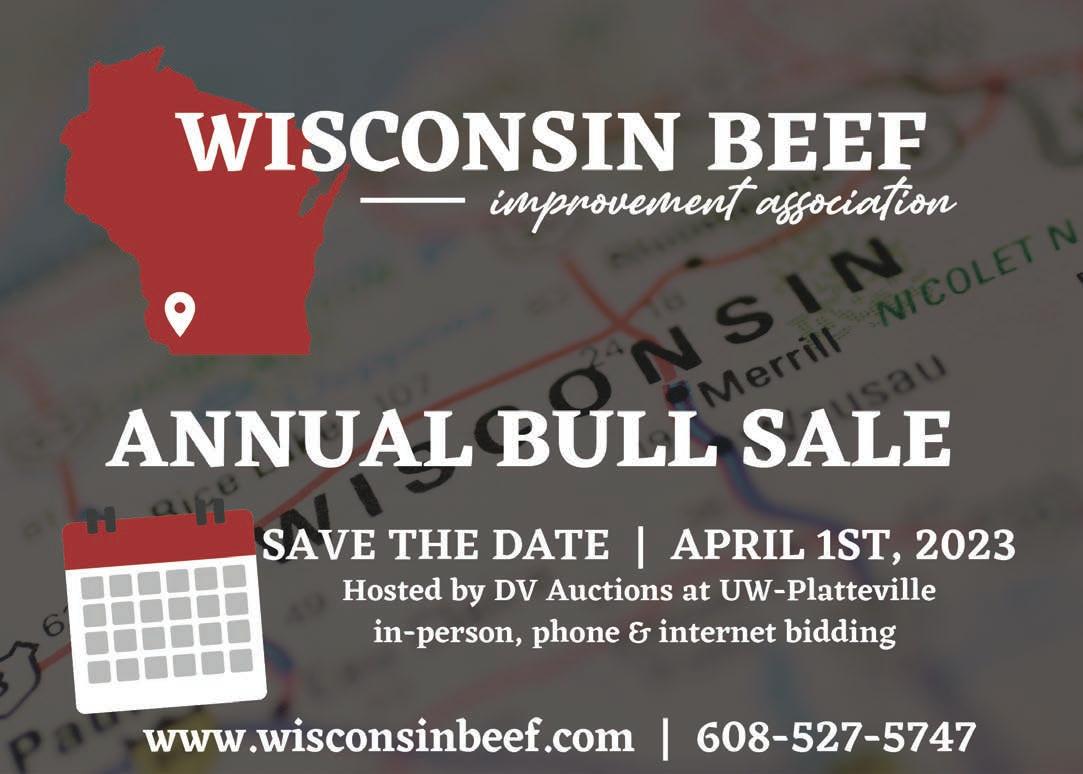
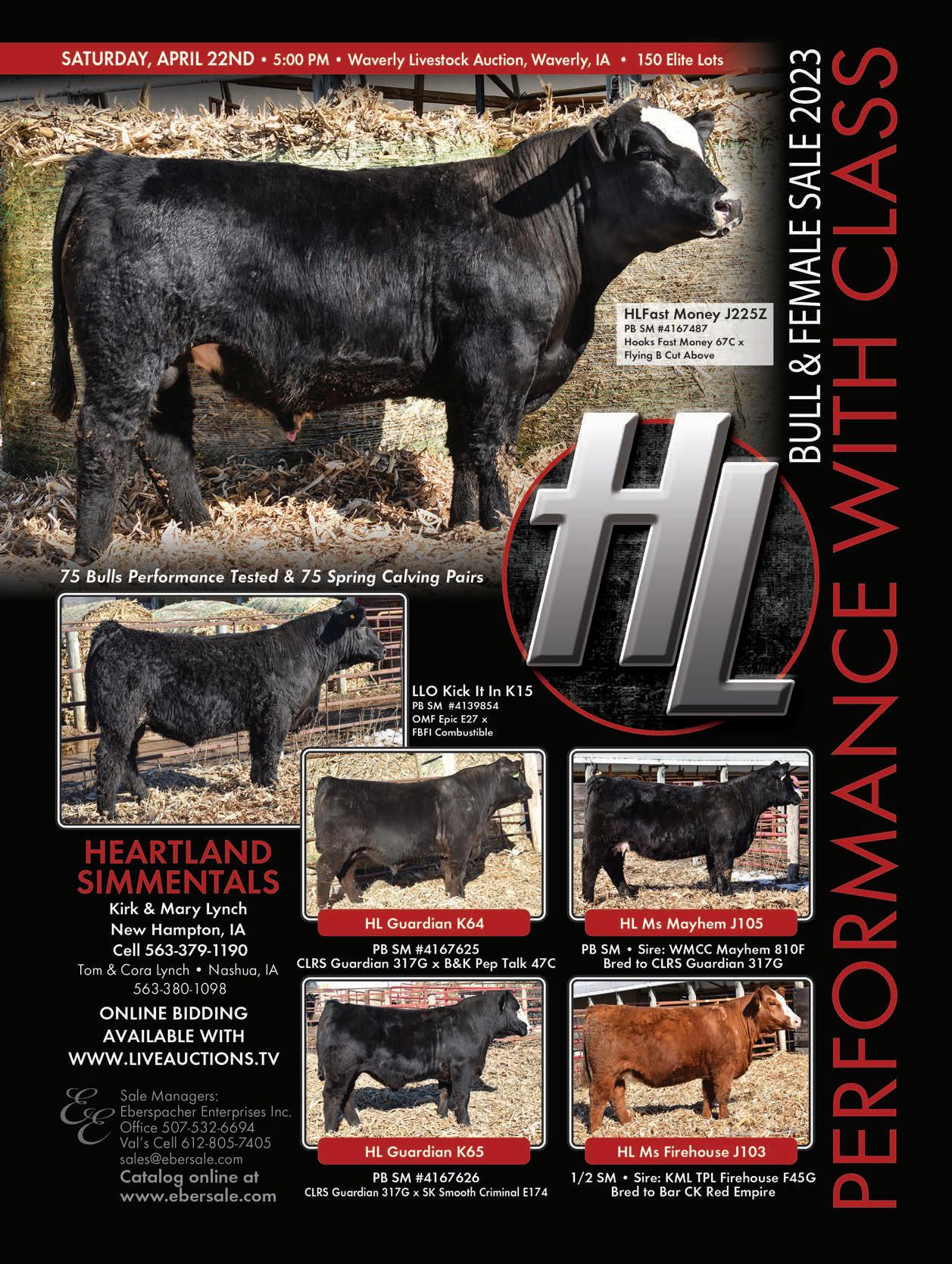
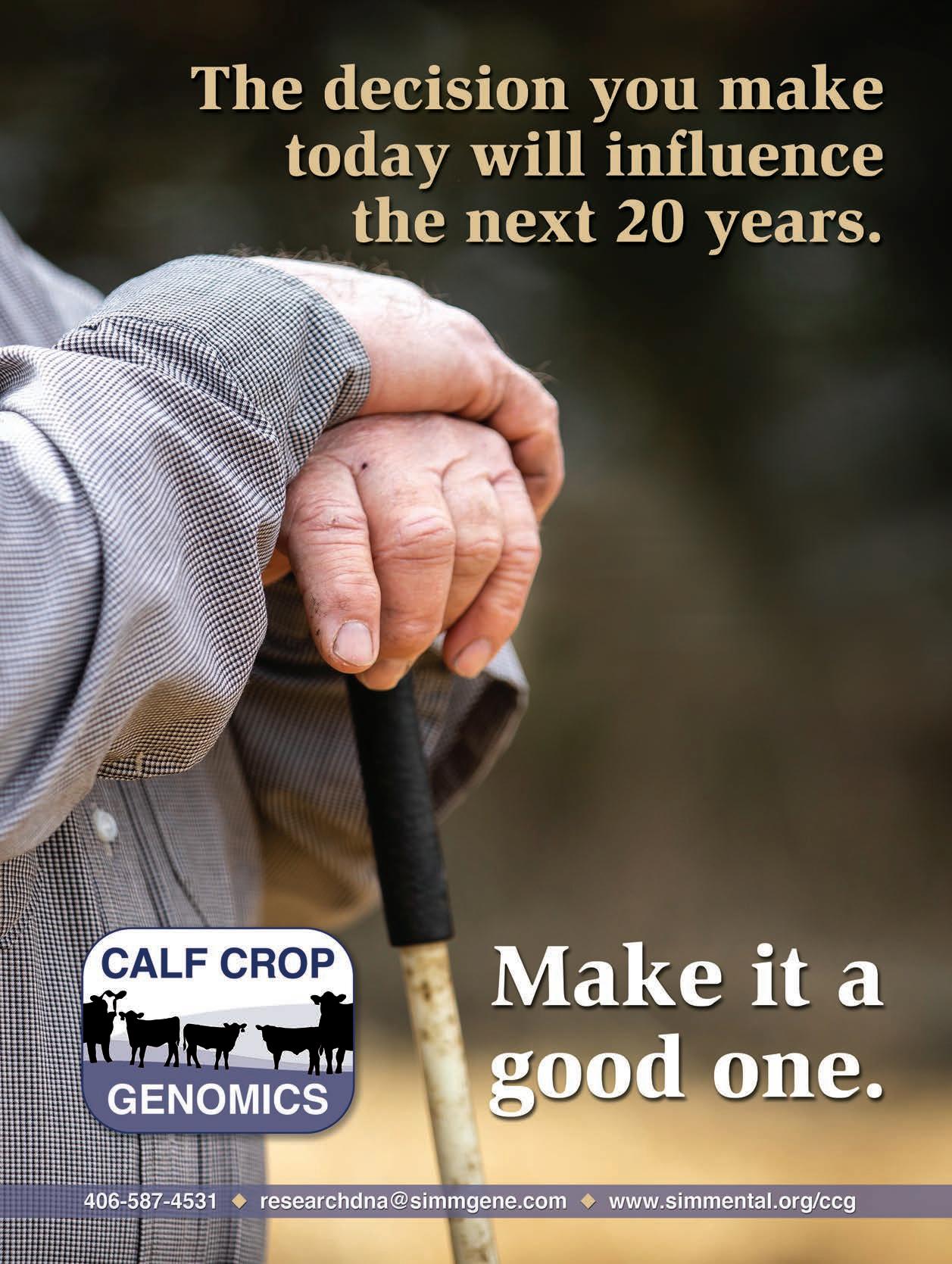

The main page of the website has a new look highlighting ASA spotlight articles, industry news, and easy to navigate location for articles in a series.

simmental.org
makes it easy for you.
Sections include:
© Industry News and Events

© ASA Spotlight
© EPD FAQs


© Women of ASA
© Down to the Genes
Cattlemen’s Heritage officials say the new plant will represent an economic gain of $8 billion in Iowa through construction, plant jobs, tax revenues, and other positive economic activities over the next five years by offering more local processing options.
Total digestible nutrients (TDN) are the common energy reference for both feed content and animal requirement, so how are the two connected, and what can we know to better examine TDN of feedstuffs and use energy economically?
The initial measure of energy begins with gross energy (GE), which is the term for all energy contained within a feed and consumed by the animal. By subtracting all the energy that passes through to manure from GE, you get digestible energy (DE). Digestible energy is the measure of energy converted into TDN within feedstuffs.
Where does TDN intersect with cattle management decisions? Most commonly, when analyzing forage sample results, we can see the TDN value as a percent of the dry matter composition. First, understand that the percent TDN indicates forage quality and measures potential for digestibility. The average measure of meadow hay is 53% with a typical range from 49% to 57%. Sandhills range has the potential to be 56% but can range from 49% to 68% throughout the year, when evaluating actual selected forages (Table 1).
and crude protein (CP) values. The value for native prairie hay and meadow hay sourced from The Nutrient Requirements of Beef Cattle, 2016. The value for Sandhills range and meadow sourced from actual cattle diets collected at the University of Nebraska–Lincoln’s Gudmundsen Sandhills Laboratory.
The relationship between feedstuff digestibility and protein content are somewhat correlated. As plants mature and the protein value starts to decline, digestibility decreases and we will see a lower TDN value. Knowing this allows us to economically evaluate forages beyond just a protein value.
A 1,400-pound, spring-calving cow currently in mid-gestation requires 11.6 pounds per day of TDN. On a forage with 50% TDN, the cow’s daily intake would have to be 27.0 pounds of hay, as-fed. If the hay is 60% TDN, that intake requirement drops to 22.2 pounds per day. The December 1, 2022, Nebraska Hay Summary reported Good Quality (9% to 13% CP) prairie hay selling at $205.00 per ton. For a cow during mid-gestation (90 days), she would consume 405 pounds additional forage of 50% TDN, which costs $41.51 per cow more for mid-gestation alone. Multiply that by 150 cows and the additional economic value during the second trimester is 60,750 pounds of hay for an added cost of $6,227.
Protein is the first limiting nutrient when meeting range beef cow requirements because if crude protein falls below 7%, intake will decrease. However, energy is what the cow needs to live and do her job. Evaluating

forages on both a protein and energy basis can ensure we know how to manage our feeds this winter—especially in a purchasing scenario—to ensure we get the most value with the resources we have going into a winter with elevated feed costs and inconsistent moisture.
The USDA National Organic Program (NOP) previewed the Strengthening Organic Enforcement (SOE) final rule, which will enhance the oversight and enforcement of the production, handling, and sale of organic products.
The final rule implements 2018 Farm Bill mandates, responds to industry requests for updates to the USDA organic regulations, and addresses National Organic Standards Board (NOSB) recommendations.
Jenny Lester Moffitt, the USDA undersecretary for marketing and regulatory programs, called the rule “the biggest update to the organic regulations since the original Act in 1990.”
The new SOE, as described by the USDA, “protects organic integrity and bolsters farmer and consumer confidence in the USDA organic seal by supporting
strong organic control systems, improving farm to market traceability, increasing import oversight authority, and providing robust enforcement of the organic regulations.”
The update includes:
• Increasing authority for more rigorous on-site inspections of certified operations.
• Requiring uniform qualification and training standards for organic inspectors and certifying agent personnel.
• Requiring standardized certificates of organic operation.
• Requiring additional and more frequent reporting of data on certified operations.
• Creating authority for more robust record-keeping, traceability practices, and fraud prevention procedures.
• Specifying certification requirements for producer groups.
Organic operations, certifying agents, and other organic stakeholders affected by the rule will have one year from the effective date of the rule to comply with the changes.


Perdue Farms hopes a partnership will help the food giant to reduce its carbon emissions. Perdue teamed up with GreenGasUSA, which completed installation of equipment at Perdue’s operations in Lewiston, North Carolina, to capture the methane from the operation’s onsite wastewater treatment facility and convert it to renewable natural gas (RNG) late last year, according to a release from Perdue.
“Through GreenGas’ partnership with large food producers, industrial, and manufacturing companies all across the United States, the pipeline-grade RNG is transported from Perdue’s Lewiston operation to a GreenGas RNG pipeline interconnection hub, where it is injected into existing pipelines and made available to their customers,” the release said.
The change is the greenhouse gas (GHG) equivalent of eliminating 1,181,500 gallons of gasoline consumed.

“Through this high-impact initiative in North Carolina, we’ve initially reduced Perdue’s company-wide carbon emissions by 17%, and expect that number to grow considerably over time,” said Drew Getty, Perdue Farms vice president of environmental sustainability and government relations. “Working with like-minded
• 18-month-old and yearling bulls developed for longevity!

• Full Fleckvieh, Fullblood Simmental, and Black Fleckvieh influenced bulls available.

• Be sure to look for our 2nd Annual Red, White and Beautiful Fleckvieh Female sale in November.
partners like GreenGas, we’re able to accelerate our environmental efforts and continue reducing the impact of our operations.”
USDA and negotiators from the Office of the US Trade Representative (USTR) are expressing “severe concerns” about proposed changes in Mexico’s policies on using genetically engineered corn and other products by January 31, 2024.
Officials from both nations recently concluded talks following what US agencies called “a decree” from Mexico president Andres Manuel Lopez Obrador on ending the use and importation of the genetically engineered feed products early next year.
The proposed changes are “not grounded in science” and threaten to disrupt billions of dollars in bilateral agricultural trade, USTR negotiator Doug McKalip said in a statement following adjournment of the meetings. The proposal would “cause serious economic harm to US farmers and Mexican livestock producers and stifle important innovations needed to help producers respond to pressing climate and food security changes,” the statement added.
US officials concluded the statement by thanking their Mexican counterparts for efforts to “hammer out a solution,” but added that “we will consider all options, including taking formal steps to enforce our rights under the US-Mexico-Canada Agreement (USMCA)” to resolve the issue.
ASA# 3938352


Multiple sons sell
Boyle Ranch Ferrari son Multiple brothers available


The United States Cattlemen’s Association, R-CALF USA, among 48 other groups and organizations recently sent a letter to US Senate and House members asking them to reintroduce the American Beef Labeling Act in 2023, which would reinstate country-of-origin-labeling (COOL) for beef in the US.
As the letter states, “We the undersigned organizations would like to express our gratitude for your leadership and support of the American Beef Labeling Act (S.2716, H.R. 7291). This commonsense policy has remained popular with the American people since Congress rescinded country of origin labeling for beef in 2015.”
This bill would reinsert the words “beef” and “ground beef” to the existing 2002 MCOOL law, which requires country-of-origin labels on other foods, such as lamb, chicken, fish, nuts, fruits, and vegetables. The bill would further require all beef, including imported beef, to be



labeled as to where it was born, raised, and harvested.
The joint letter also notes a recent poll conducted by Morning Consult on behalf of the Coalition for Prosperous America (CPA), in which 86% of votes support the American Beef Labeling Act, with 64% of voters who strongly supporting, and 22% of voters somewhat supporting the legislation.
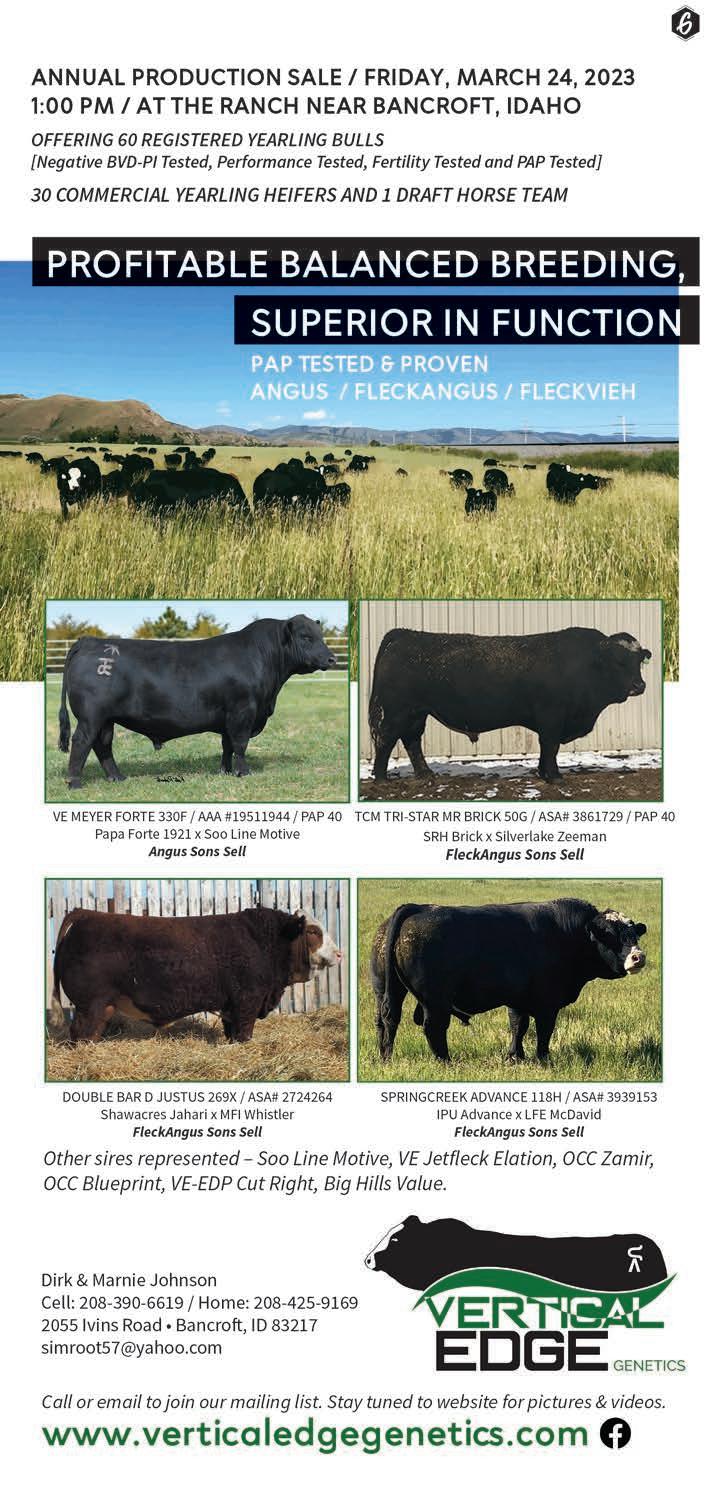
Originally introduced in the Senate by Sen. John Thune (R-SD) in September 2021, the bill was last referred to the Committee on Agriculture, Nutrition, and Forestry.
The letter addressed Sen. Thune and co-sponsors Sen. Jon Tester (D-MT), Sen. Mike Rounds (R-SD), Sen. Cory Booker (D-NJ), Sen. John Hoeven (R-ND), Sen. Ben Ray Lujan (D-NM), Sen. Cynthia Lummis (R-WY), Sen. Martin Heinrich (D-NM), Sen. John Barrasso (R-WY) and Sen. Kirsten Gillibrand (D-NY), as well as US House of Representatives supporters, including Rep. Lance Gooden (R-TX), Rep. Ro Khanna (D-CA) and Rep. Morgan Griffith (R-VA).
“Although we did not cross the finish line in the 117th Congress we are confident that with your continued leadership and our support we can ensure that beef produced from US-born and raised cattle is distinguished in the marketplace and consumers will have accurate information as to the origins of the beef they purchase for their families in the 118th Congress,” the letter states.
The way to reduce greenhouse gas emissions is to offer technical and financial support to rural producers, particularly to the smaller producers, Global CEO of JBS Gilberto Tomazoni said during a panel discussion during the World Economic Forum’s 53rd annual conference.

“We need to focus on supporting farmers, with knowledge-sharing and access to credit to make the transition to more sustainable production. This way, they will be able to produce more, be more efficient, while applying existing technology,” said Tomazoni, speaking from Davos, Switzerland, the Swiss ski-resort town that hosts the conference.
Tomazoni highlighted that in Brazil, there are solutions to promote more efficient and sustainable agriculture and livestock production, such as the recovery of degraded pastures. “In a single area, you can increase food production by ten times and still capture more carbon from the atmosphere,” said Tomazoni.
In addition, the CEO said, it’s necessary to offer financial credit so that farmers can put the production methods into practice, saying: “Today, less than 2% of the funds dedicated to tackling climate change go to this sector of the population. We urgently need to change this.”
As part of the solution for better land use, Tomazoni presented the JBS Fund for the Amazon, which focuses on providing technical and financial support to local projects that seek the sustainable development of the Amazon.
Finally, Tomazoni emphasized that the government, financial, and production sectors, as well as the nonprofit sector, need to come together to build a climate solution, ensuring that the resources reach small pro-
ducers without neglecting the food security of the growing world population under any circumstances. “If we work collectively to support farmers, we can produce more, reduce emissions, and protect our natural resources,” he concluded.
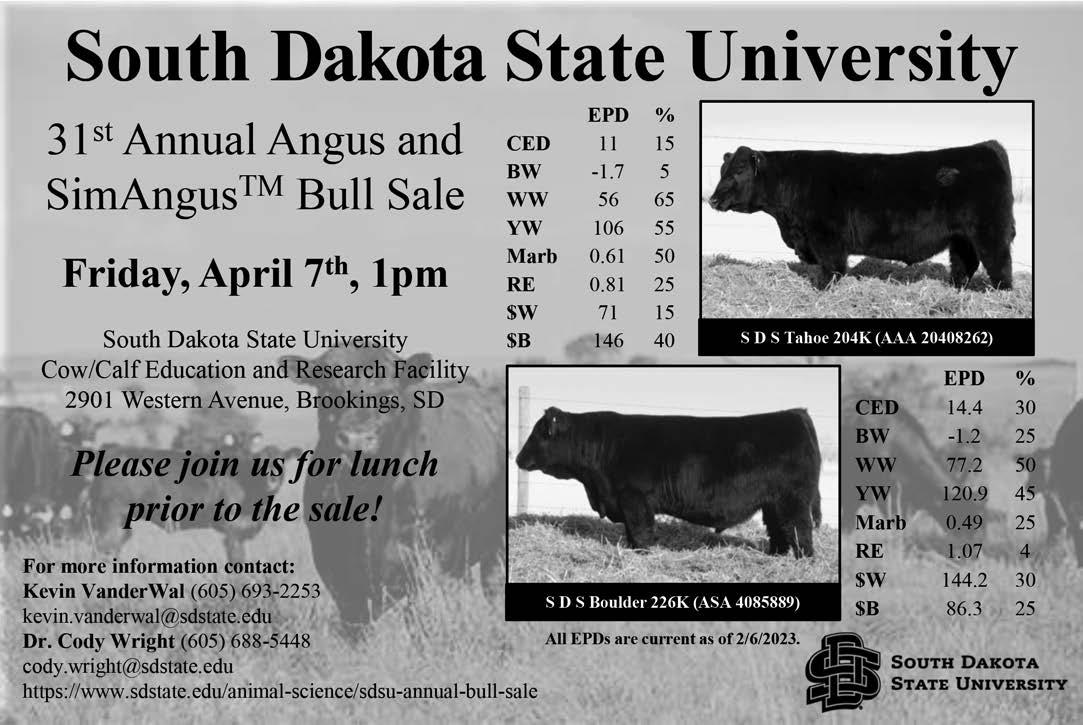
Raising an orphaned beef calf can be time consuming and may require additional expense. Additionally, calves may not be thriving at the time they are orphaned, so managing health and nutrition can present challenges. Below are considerations when creating a plan.
Age has a significant influence on the nutritional considerations for an orphaned calf. High-quality colostrum should be fed to calves that lose their dams at less than 24 hours of age. Producers should not wait to administer colostrum if there is evidence the calf has not nursed.
Beyond the first day of life, calves need 10–12% of their body weight in milk per day. A good rule of thumb is that one gallon of milk equals eight pounds. Feeding multiple times per day from a bottle or bucket
continued on page 82

are both options; however, nursing from a bottle closely mimics the nursing of the udder.
The quality of a milk replacer is critical, and the calf should be consistently fed with the same product. Milk replacers should, at a minimum, be at least 15% fat and 22% protein. Milk should be 101–105 degrees F when fed.
Within the first week after birth, offer a calf-starter ration of pellets or other creep feed along with highquality hay. Once the calf is beginning to consume one half to two pounds of dry feed daily, slow bottle weaning can be initiated. Unlike in dairy calves, best results are seen if a beef calf is fed milk for several months. At eight weeks of age, the calf’s weight should have doubled since birth.
Fresh water should be always available. Water buckets, bottles, and feed pans should be regularly cleaned and sanitized.
Calves, especially newborns, do not have the ability to easily maintain their core temperatures. Environmental conditions such as wind and outside temperatures below 50 degrees F may lead to cold stress. Especially during the winter, calves may need to be taken indoors for rewarming and fluids if their temperature drops below 99 degrees F.
Bedding can also help maintain calf temperature. Deep bedding such as straw should be available and regularly refreshed. Housing should be well-ventilated areas, clean, and dry.
Fever, decreased appetite, coughing, and diarrhea can all be clinical signs of concern. Producers should work with their veterinarians in advance to develop treatment plans and have medications on hand for commonly seen conditions.
While plant-based alternative meats have earned a spot on grocery store shelves, they haven’t won over consumers’ hearts just yet.
According to Purdue economist Jayson Lusk, high price points and inflation have caused markets to plummet, with sales down 20% from November 2021 to November 2022.
“Some of what drove growth initially was the variety/novelty factor,” Lusk says. “It was something new.” Now the novelty of plant-based may be wearing off. Enter in “dairy-based” alternative meats.
Top Protein, a startup protein technology company based out of Orlando, Florida, has been developing this
new category of alternative meat for the past four years. The company utilizes fermentation technology to create an aligned fibrous protein out of…wait for it…milk.
According to Top Protein, this protein structure can mimic both the texture and physical attributes of any meat, including beef, pork, chicken, and seafood. The dairy-based meat portfolio includes whole cuts of meats along with shredded red- and white-meat products. The company also prides itself as being a zero-waste facility. Currently, all byproduct liquid is upcycled into energy drinks. Those drinks are then served at their Fresh Craft Energy Drink Bar or bottled for retail sales. With a growing global population, Top Protein is hoping to shake up the alternative meat sector by providing an “economically mindful” protein product when compared to plant-based alternative meats.
Growth rates and carcass weights have been increasing over the last 30 years. However, little research has been conducted to determine how aggressive selection for production traits affects beef cow maintenance requirements. It is thought that cows with greater genetic capacity for growth, milk, and mature weight have greater maintenance energy requirements. To measure this, Amanda Holder, a graduate student at the Oklahoma State University (OSU) Range Cow Research Center, examined the effects of diet type on greenhouse gas emissions and dry matter intake estimation. They used 42 Angus cows with a wide range in Dry Matter Intake (DMI) EPD (-1.36 to 2.29) that were fed either grass hay only or a mixed diet of 35% hay and 65% concentrate feeds. They found that intake of the mixed ration and the long-stem hay were correlated, but cow weight gain while consuming hay was not correlated with cow weight gain while consuming the concentrate-based diet. As intake of both diets increased, both CO2 and methane production increased. Daily greenhouse gas emissions increased with increasing feed intake and were lower when cows consumed hay compared to emissions during the period cows consumed the mixed diet.
A study by OSU graduate student Emma Briggs investigated hay voluntary intake and its relationship to both recovered energy (cow weight gain and milk production) and maintenance energy requirements during the dry period in Angus cows. Twenty-four mature fall-calving Angus cows were individually fed in amounts to ensure minimal weight and body condition change. Recovered energy was calculated as the total of maternal tissue energy change (weight gain or


To aid in the professional development, success, and experiences of young animal scientists at the regional and national level, by providing support for graduate study. The recipient shall mentor a Masters or PhD student in Animal Science.
The recipient mentor and student shall provide a report for publication in both SimTalk and theRegister.
The Committee requests that faculty mentors apply for the grant to assist in planning and conducting research, as well as graduate student recruitment and travel. The Committee will award funds to the top two qualifying programs: $5,000 to the top pick and $3,000 to the second choice.
This grant is available to all agriculture disciplines; however, focus will be on the genetic improvement of livestock.

Entry Deadline: April 15, 2023, with announcement by May 15, 2023.
Faculty members must submit an application explaining the particular area of study and how these funds will be used. The application will include a description of the research, along with supporting documentation from the Department Administration.
This grant will be made payable as a gift to the research account of the selected faculty member.
Entry Deadline: April 15, 2023

loss) plus milk recovered energy (milk yield plus milk composition). From this information, maintenance energy requirements were calculated for each cow. After calves were weaned, a voluntary feed intake study was conducted to determine the influence of total recovered energy during lactation and lactation maintenance energy requirement on voluntary intake of a low-quality grass hay diet. The energy required for maintenance declined as net energy recovery increased, but there was no relationship between the amount of daily milk energy produced to post-weaning voluntary forage intake. However, increasing weight loss during lactation was associated with greater postweaning feed intake. In contrast to previous work, these results suggest that cows within a breed that are better able to maintain their body condition and produce more milk energy at the same time have lower maintenance energy requirements.
Around 74% of the maintenance energy required to produce beef is used by the beef cow herd, and consequently about 70% of the greenhouse gas emissions generated by beef production are from the cow herd. Cow efficiency and greenhouse gas emissions are important to consumers and government regulators; thus, they are important for our industry.

Brad Schick, University of Nebraska Extension Shelter for livestock during the winter months can influence the success of calving and a livestock operation. Protection from the wind and snow is not always readily available from natural topography or living windbreaks such as tree lines or shrub rows. The presence of wind increases heat loss in livestock during the winter and can penetrate the hair coat allowing cold air to reach the skin, accelerating the loss of heat. Constructing windbreaks increases protection for livestock. Installing a windbreak needs to come with the end goal in mind. The windbreak will only be as good as it is designed and using the wrong design can cause more harm than good. Some windbreaks are used primarily as snow fences to collect snow directly on the downwind side. These fences are typically used to prevent snow from drifting in dry lots and driveways further downwind or can be used to collect snow for ponds. Knowing the purpose of the windbreak is vital to its success.
Livestock performance and survival is affected by wind and temperature. When temperatures drop below 18 degrees, cattle begin to experience cold stress — even
continued on page 88

with their heavy winter hair coat — and feed intake will need to increase to maintain a suitable body temperature. Calving success can increase by 2% behind a windbreak, according to Kansas producers. A general rule of thumb we can use is that for every degree of cold stress a cow faces, they increase their energy requirements by 1%. In Montana feedlots during severe winters, cattle behind windbreaks gained 10.6 lbs. more than cattle that did not have windbreaks.

The different combinations of constructed windbreaks include permanent and temporary as well as porous and nonporous. Research by the USDA Forest Service at the Rocky Mountain Research Station examined nonporous or solid windbreaks. Research by the University of Saskatchewan, Saskatchewan Agriculture and Food, and Manitoba Agriculture focused on porous windbreaks. Ultimately, the turbulence of the wind behind the windbreak determines the size of the protected area and the degree and placement of snow accumulation.
A solid (nonporous) windbreak constructed in a V configuration will create protection from snow and minimize snow in the crux of the V. The sides of the V should form a 90-degree angle, and the point should be built facing into the prevailing winter winds. This will cause snow to be diverted around the ends of the barrier and form drifts away from the sheltered area. The area of shelter will be downwind about five times the height
of the barrier. “Shelter” in this design is considered to reduce wind speed by 60% with minimal snow accumulation. The shelter width, measured as the distance between the open ends of the windbreak’s sides, should not exceed 15 times the height of the barrier. For example, a barrier eight feet tall can have sides no longer than 85 feet because the distance between the ends of the sides with that configuration is 120 feet wide. If the sides are longer, snow will begin to drift over the barrier and into the sheltered area. This same design can be used for a temporary or annual windbreak by stacking large round hay bales. Be sure to stack bales tightly to allow no gaps. Stacks two bales high —the bottom vertical and the top horizontal — worked well in ranch tests. A temporary V shelter can also be constructed using two eight-foot-long panels with a tarp or canvas secured to the panel. This requires some anchor system, but can be a quick one-man solution when weather gets bad.
Porous windbreaks can be constructed in a line and can be permanent or temporary. Effectiveness of this type of windbreak is determined by porosity (open area as % of total), which affects the amount of wind reduction and the area of wind reduction. Porosity at 25–33% will optimize protection from wind and snowdrifts. Years of research have determined the protected area to be eight to ten times the height of the windbreak.
ASA# 4147063 • PB SM CLRS Guardian 317G x HTG Allie E09 Top 2% $TI Top 3% $API, REA, and CW Top 4% Marb Top 5% YW Top 25% CE





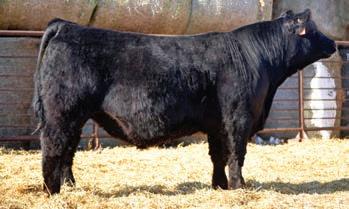



ASA# 4147055 • 3/4 SM 1/4 AN LBRS Genesis G69 x HTG Glamour 37E
OMF Epic E27 x HS/JZY Ellie E65B



Therefore, a ten-foot-tall fence (with 25–33% porosity) will provide 80 to 100 feet of protection behind it. If using vertical boards to build a windbreak, six-inch boards with two-inch spacings will create 25% porosity. For temporary construction, the base must be as wide as the windbreak is tall to avoid toppling. Some temporary windbreaks have been constructed with axles and hitches for portability. Using a steel frame and vertical boards is a sturdy, low-cost option when constructing these windbreaks.
Temporary or portable windbreaks can have tradeoffs. Some advantages include the ability to move calving pastures, reducing hay loss fed in bunks or on the ground, shelter for cattle grazing crop residue fields, manure concentration in a nutrient-poor portion of the field, and avoiding feed residue buildup. Some disadvantages of portable windbreaks include moving the windbreaks, often costing more than permanent windbreaks, toppling in extreme winds, and freezing of the base to the ground.
Installing a windbreak needs to come with the end goal in mind. Permanent or temporary, porous or nonporous, the design needs to fit the needs of an operation. In cold and windy situations, protection for livestock will reduce cold stress and aid in calving success and energy requirements. Windbreak designs have their advantages and disadvantages. Evaluate the tradeoffs and put time into the design.
● Windbreaks with a V configuration into prevailing winds will provide downwind protection five times the height of the fence.
● A straight, 25–33% porous windbreak will provide protection eight to ten times the height of the fence.
Windbreaks can increase calving success by 2%.
continued on page 94
91, 93) 18
MN
24 Vertical Edge Genetics’ Annual Production Sale — Bancroft, ID (pg. 78)
25
Clear Choice Bull Sale — Milan, IN (pgs. 52, 75)
25 T Heart Ranch’s High Altitude Bull Sale — La Garita, CO (pgs. 22, 23, 52)
25 Wildberry Farms’ Bull and Bred Heifer Sale — Hanover, IL (pgs. 14, 15)
27 Green Spring Bull Test Sale — Nevado, MO (pg. 39)
28
OSA’s Spring Online Sale — www.dponlinesales.com

Food-at-home prices increased by 11.4% in 2022, more than three times the rate in 2021 (3.5%), and much faster than the 2% historical annual average from 2002 to 2021.
Of the food categories depicted in the chart, all except beef and veal grew faster in 2022 than in 2021. In 2022, price increases surpassed 10% for food-at-home and for nine food categories.
Egg prices grew at the fastest rate (32.2%) after an outbreak of highly pathogenic avian influenza (HPAI) throughout 2022. Prices for fats and oils increased by 18.5%, largely because of higher dairy and oilseed prices.
Prices also rose for poultry (14.6%) and other meats (14.2%).
Elevated prices for wholesale flour — attributed to the conflict in Ukraine and rising fertilizer prices — and eggs contributed to a 13% price increase for cereals and bakery products.
Prices for beef and veal (5.3%), fresh vegetables (7.0%), and fresh fruits (7.9%) rose more slowly, but all categories exceeded their historical averages.
Food prices grew more quickly than the overall rate of inflation (8%), as the HPAI outbreak, the Ukraine conflict, and economy-wide inflationary pressures contributed specifically to rising food prices.
USDA, Economic Research Service (ERS) researchers project food-at-home prices will increase 8% in 2023, with a prediction interval of 4.5% to 11.7%. ERS tracks aggregate food category prices and publishes price forecasts in the monthly Food Price Outlook data product, updated January 25, 2023.
APRIL (continued)
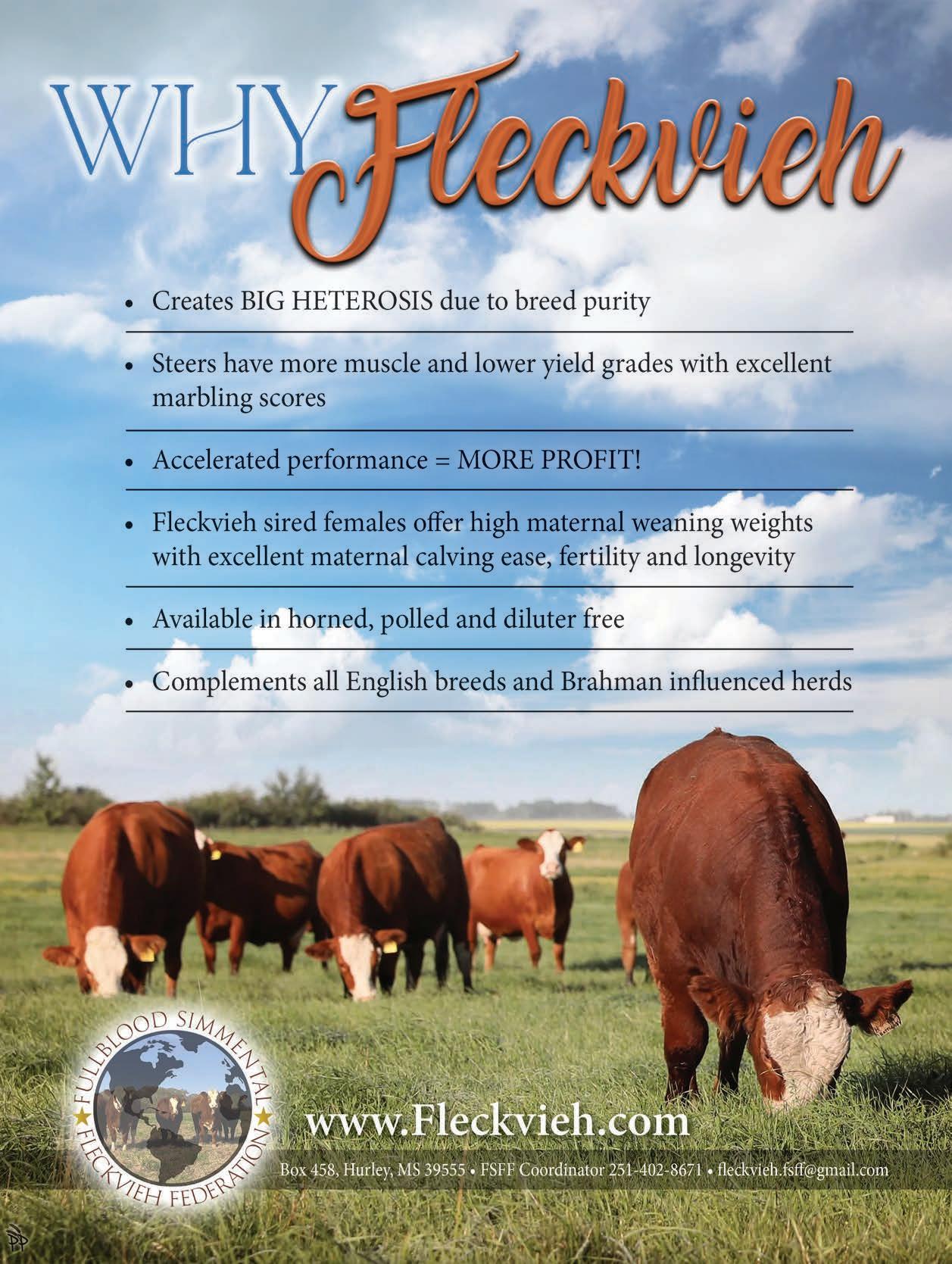
RATES & POLICIES
SimTalk is an 81/8 x 107/8-inch publication produced by the Register, the official publication of the American Simmental Association. Published four times annually, SimTalk is a glossy, full-color publication with a circulation that targets commercial users of SimGenetics. Advertising in SimTalk provides a unique opportunity to brand and trademark your program to thousands of potential customers. If you are serious about communicating with the commercial beef business, consider an advertising presence in every one of our four annual issues.
Ad Sales Staff
Space and four-color rates for SimTalk:


Nancy Chesterfield
406-587-2778
nchesterfield@simmgene.com
SimTalk deadlines for publication: Sales Close Ad Materials Camera Ready Mail Date
July
25
28
11
31
Rebecca Price
406-587-2778
rprice@simmgene.com
Subscriptions
• Domestic $50/year
• First Class $100/year
• All International $150/year (USD)
One Genetics Way Bozeman, Montana 59718 406-587-2778
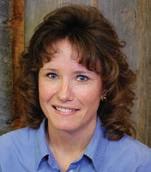

register@simmgene.com
Send
Sept
20
1
29
25
8
1
10
26 January 2024
18
12
ASA/SimTalk Membership Directory 2023 deadlines for publication: May 2 May 9
May
A non-refundable $50.00 fee will be assessed if a client does not meet deadlines or if the client commits to advertising and cancels after the deadline or if the ad must be dropped to ensure on-time publication. Ad materials (including photos) must be in the SimTalk office by the dates listed above. SimTalk, which mails by bulk rate, assumes no responsibility for actual receipt date.
Design Charges
Advertising rates are for camera-ready ads only. Additional design charges will apply to any ad designed by ASA Publication, Inc.
Layouts & Proofs
Every effort will be made to provide proofs on all ads, if all ad materials arrive in the SimTalk office prior to the deadline and a correct email address or fax number is provided.
Terms
All accounts are due and payable when invoiced. Interest charges of 1.5% per month (18% APR) will be added to accounts 30 days past due. If an account becomes 60 days delinquent, all ASA Publication, Inc., work may be suspended until full payment is made. After review by the ASA Executive
Advertising Content
SimTalk and its staff assume no responsibility or obligation to verify the accuracy and truthfulness of advertising copy submitted to SimTalk. However, SimTalk reserves the right to reject any advertising copy or photo which SimTalk deems unsuitable for publication for any reason, including copy or photographs that are false or misleading. SimTalk assumes no responsibility for the accuracy and truthfulness of submitted print-ready ads. Advertisers shall indemnify and hold harmless SimTalk for any claims concerning advertising content as submitted. Advertising containing pedigrees or statements regarding performance must conform to records kept by the American Simmental Association. Copy deviating from official records may be changed as necessary without advertiser consent.
Editorial Policy









